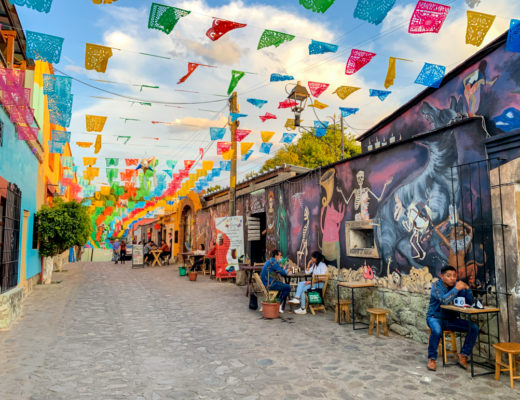When I told people I was going to Ethiopia, the usual reply was a surprised “But…why?”. The Horn of Africa has been for a long time out of the tourism spotlight as it dealt with drought, famine and revolution. But things are rapidly changing. Ethiopia is seen as Africa’s “newest travel adventure” and I’m here to show you all the wonders we’ve been missing out on for so long.
Every trip to Ethiopia starts in its sprawling capital, Addis Ababa. Visitors usually breeze right through it on their way to the historical route to the north or the tribes in the south, but many rewards await those who spend a few days getting to know this city of 3.5 million people.
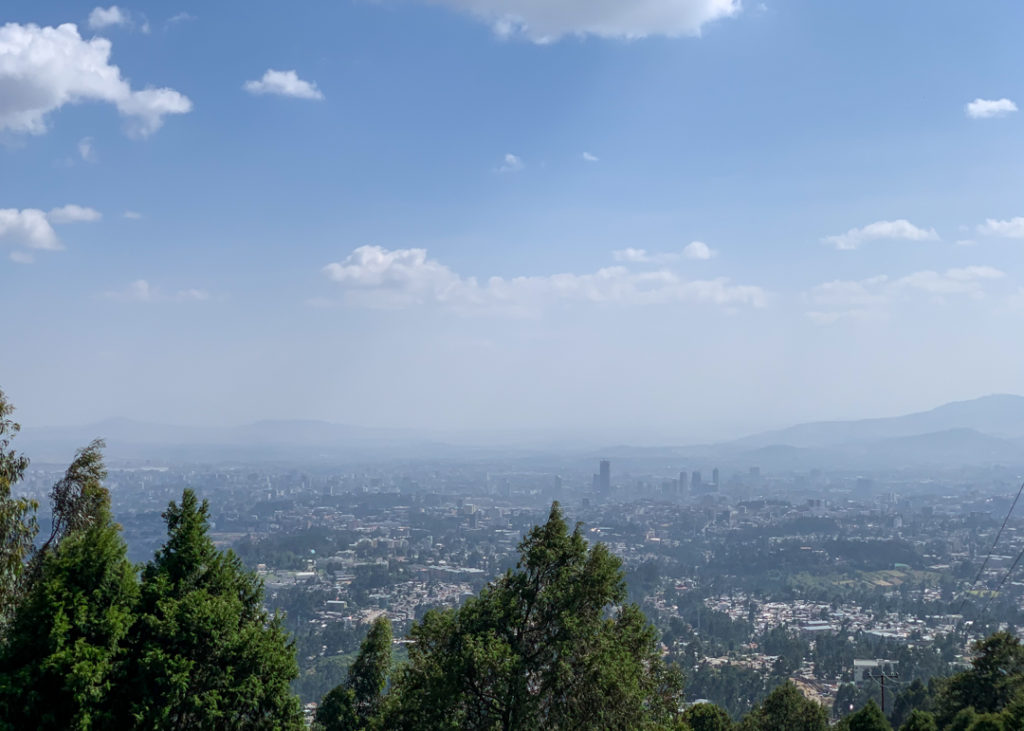
Addis enjoys almost never ending sunshine, warm and friendly locals who’ll want to make sure you have the best of times, and a rich culture that spans food, music, art and so many other facet of this intriguing capital. Walking around you’ll inevitably feel the pulse of this city on the rise (and the dust as well!) as the building boom to update its infrastructure can be seen everywhere. New high-rise hotels, shopping malls and superhighways coexist with cows and goats munching on newly planted grass in roundabouts.
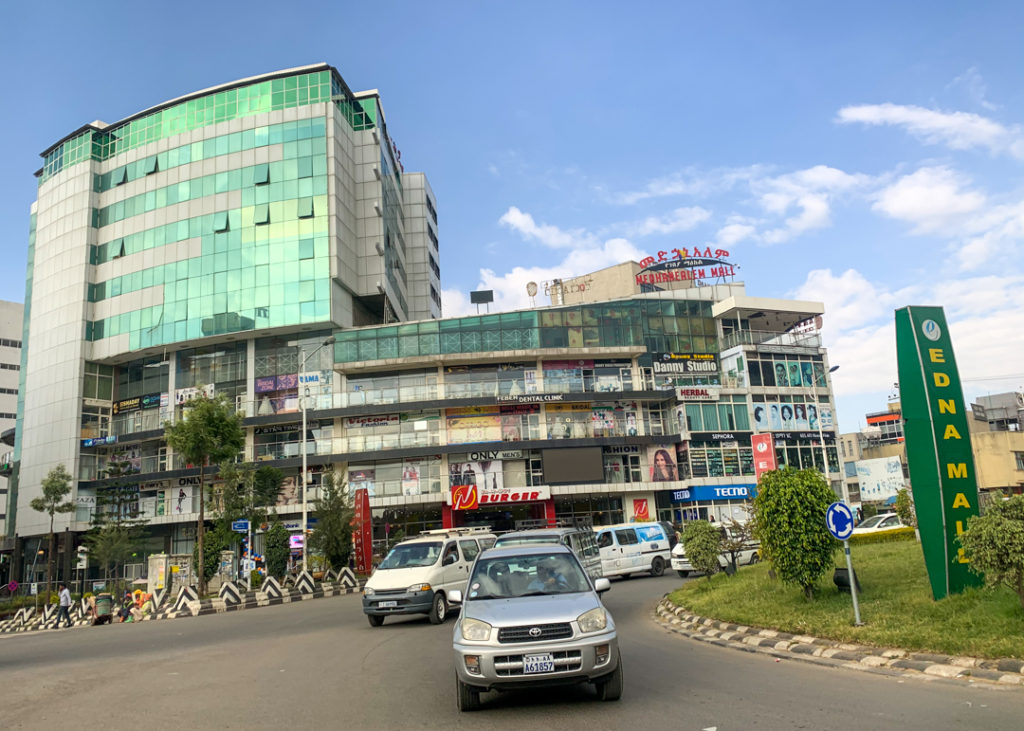
Addis is also quite spread out with main attractions far from each other i.e. this is not a walking city. While there are many cabs everywhere and their own version of Uber in Zayride, taking a city tour is a great way to check the main sites off the list with a local guide and get some useful insights in the process. I did the full day tour of Addis with Go Addis Tours, one of the highest rated local tour companies, and highly recommend it to everyone. It makes for a packed day (9am – 7pm) and includes a lot of visits and a food tour.
A stop at the National Museum of Ethiopia is a must if only to see the palaeontological exhibition in the basement which stars the world-famous replica of “Lucy“. The discovery in 1974 of the 3.5-million-year-old skull in the northwestern region of Ethiopia changed our understanding of human origins forever. The exhibit is truly fascinating, and the standing cast of Lucy is a shocking revelation on how truly small our ancestors were with her height of 3 ft 7 in and a chimpanzee-like appearance…
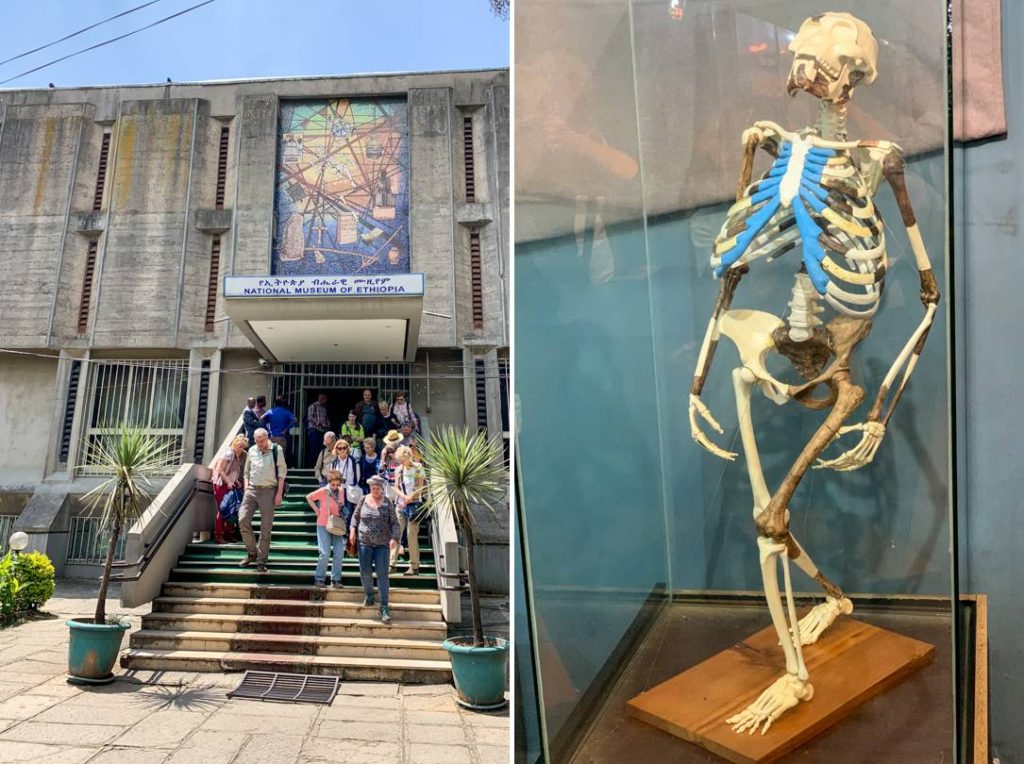
Considered to be the birthplace of the coffee plant and of coffee culture, Ethiopia produces some of the best single-origin coffees in the world and during your stay here you should drink as many cups of it as you can handle! Whether you have one at your hotel, from a seller on the street or at a local chain, you’ll quickly notice the high quality although some places will literally blow your mind. The most famous coffee shop in Addis, Tomoca, has been around since the 1950s and is worth all the hype in the world. While it has since expanded into several branches around the capital, you should visit the original location on Wawel St.
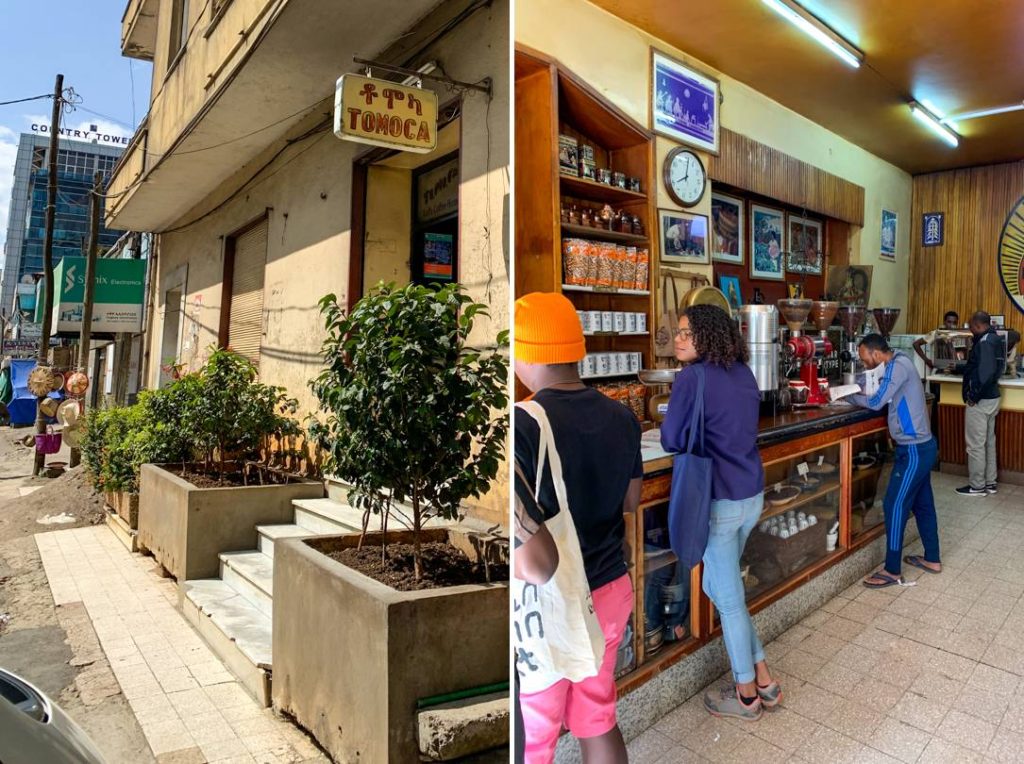
They have excellent Italian-style espresso and the Italian counter coffee culture (thanks to Mussolini’s failed 1935 invasion of Ethiopia). Their roasted blend is incredible, and thankfully you’ll be able to buy a bag of beans to bring home.
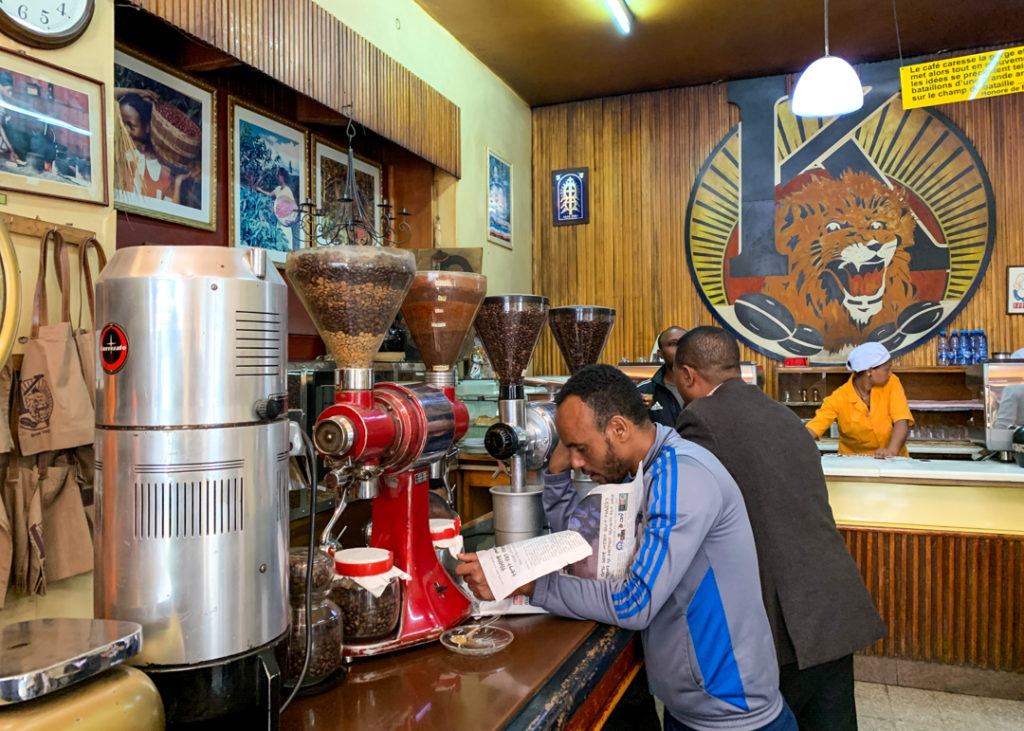
Go for a creamy, unctuous macchiato which is likely to change every past and future cups of brew you’ll ever drink. It was that good. And I’ve been to Italy many times. I’m still dreaming of that cup of coffee weeks after being back home.
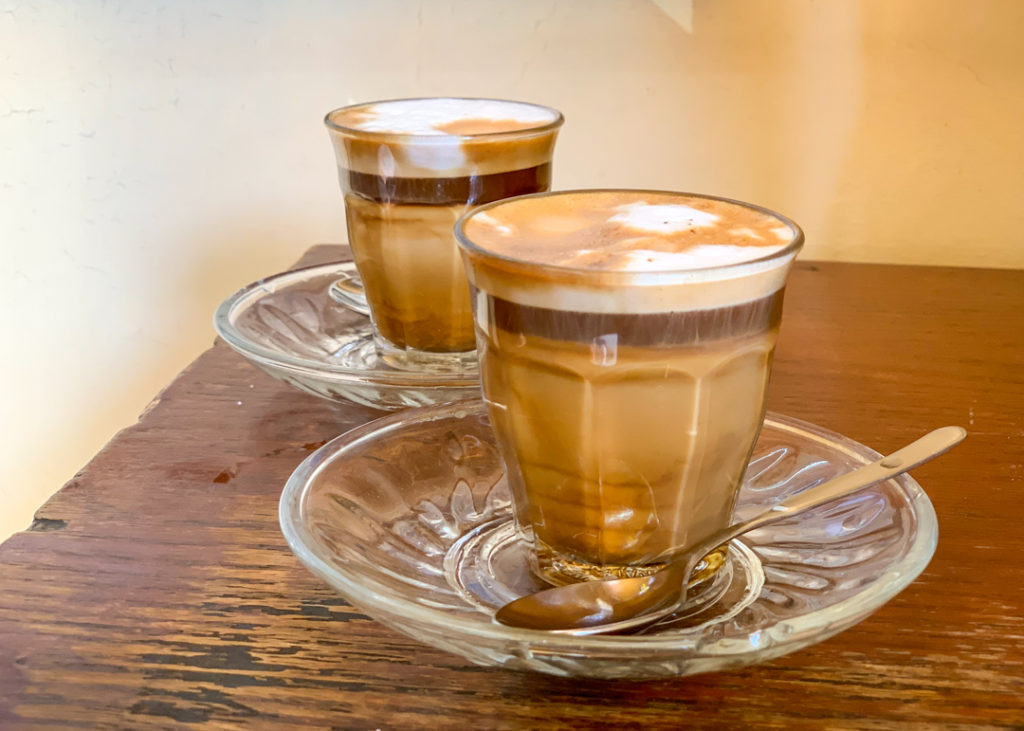
Breakfasts in Ethiopia are varied, often spicy with bread and eggs in many of them. You’ll easily find omelettes and scrambled eggs but try some local specialties like Chechebsa (pictured below) – it consists of a flatbread that is torn into small pieces and fried with berbere and spiced butter until soft and moist. I had mine served with honey and the sweet-spicy combo was delicious!
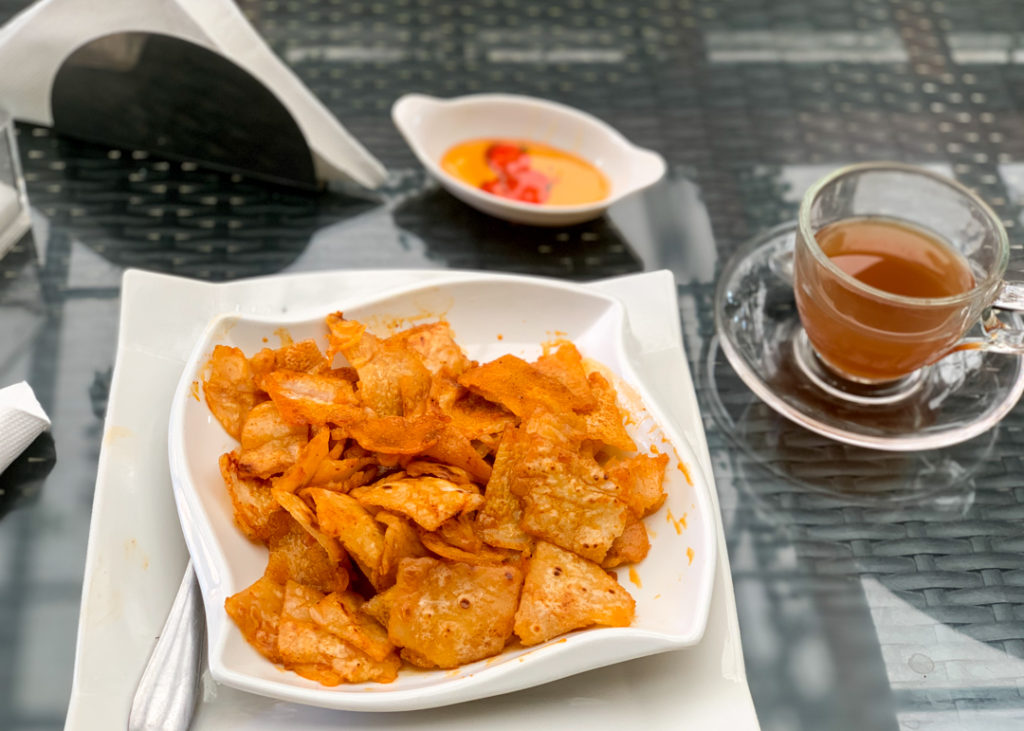
When traveling through Ethiopia, one will visit many beautiful churches, some very old, offering a glimpse into many episodes of the country’s history. Did you know that nearly half the population of Ethiopia are Orthodox Christians (the second highest number after Russia) followed by Muslims and Catholic or Protestant?
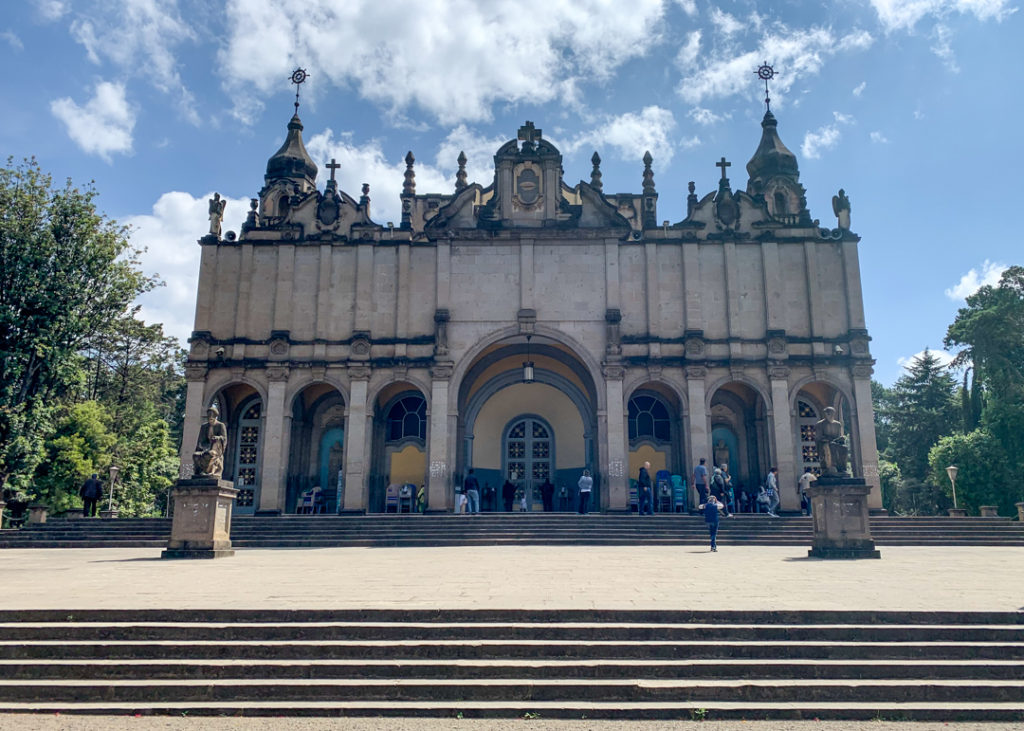
The large Holy Trinity Cathedral is fairly recent (1931) and is the final resting place of Emperor Haile Selassie and his wife. It was built to commemorate Ethiopia’s liberation from Italian occupation and is the second most important place of worship in Ethiopia.
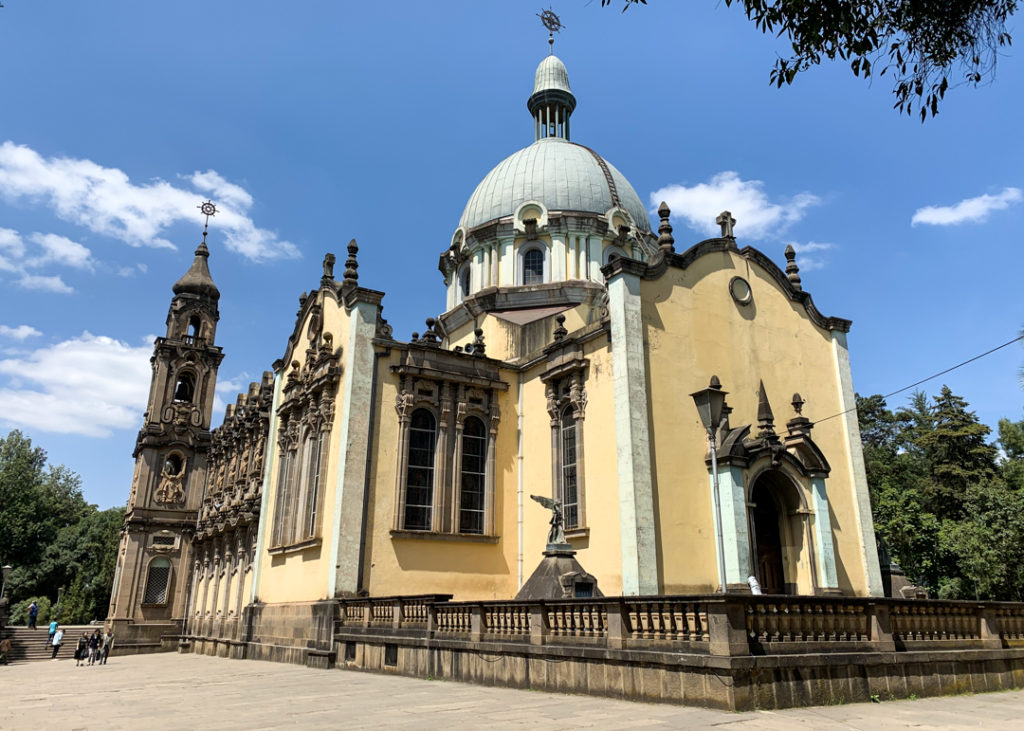
The interior is lavishly decorated with modern and medieval style paintings and you can see the granite crypts of the emperor and his wife near the front as well as two beautifully carved imperial thrones, each made of white ebony, ivory and marble.
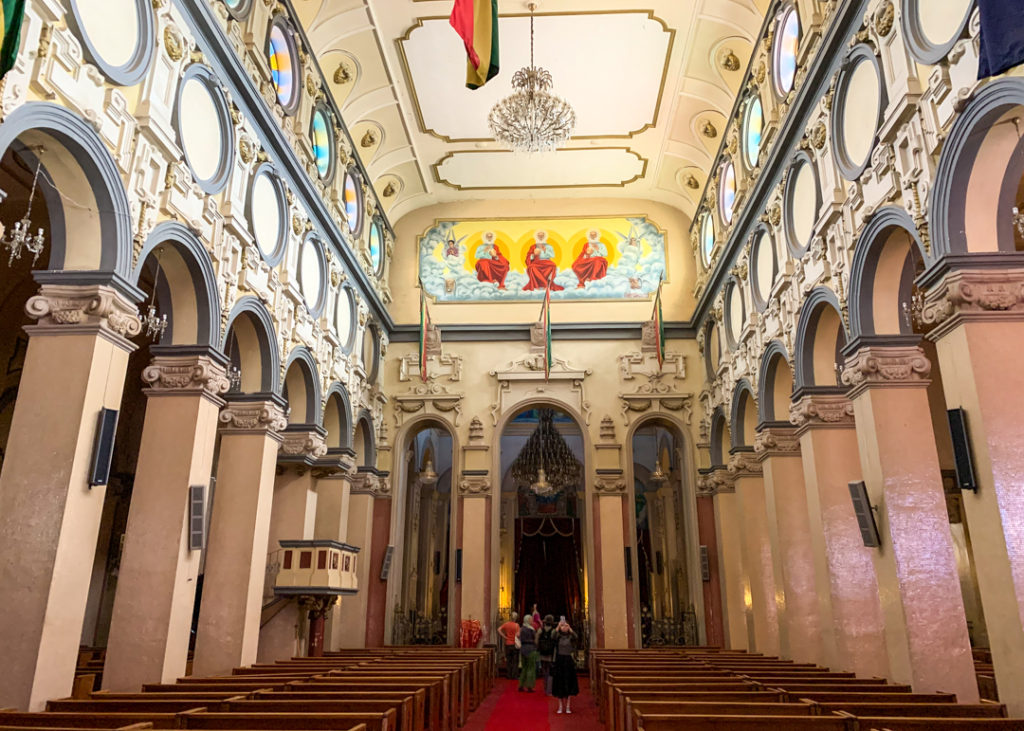
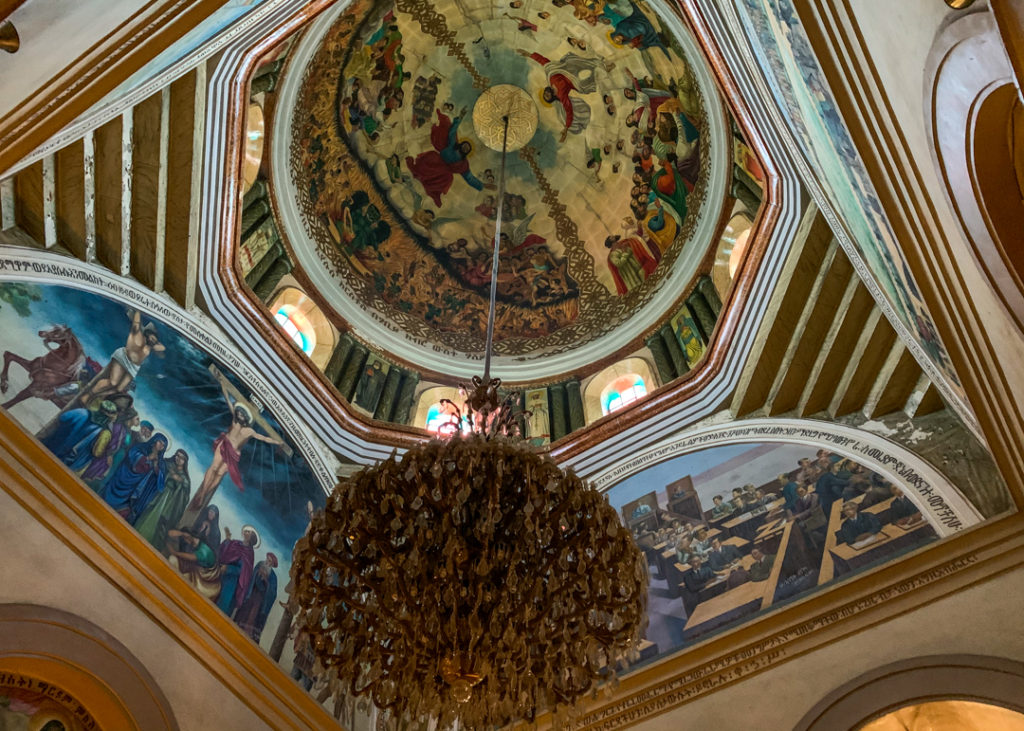
Near the southeast of the cathedral you’ll find the circular Be’ale Wold church which used to be the original Holy Trinity Church before the cathedral was built.
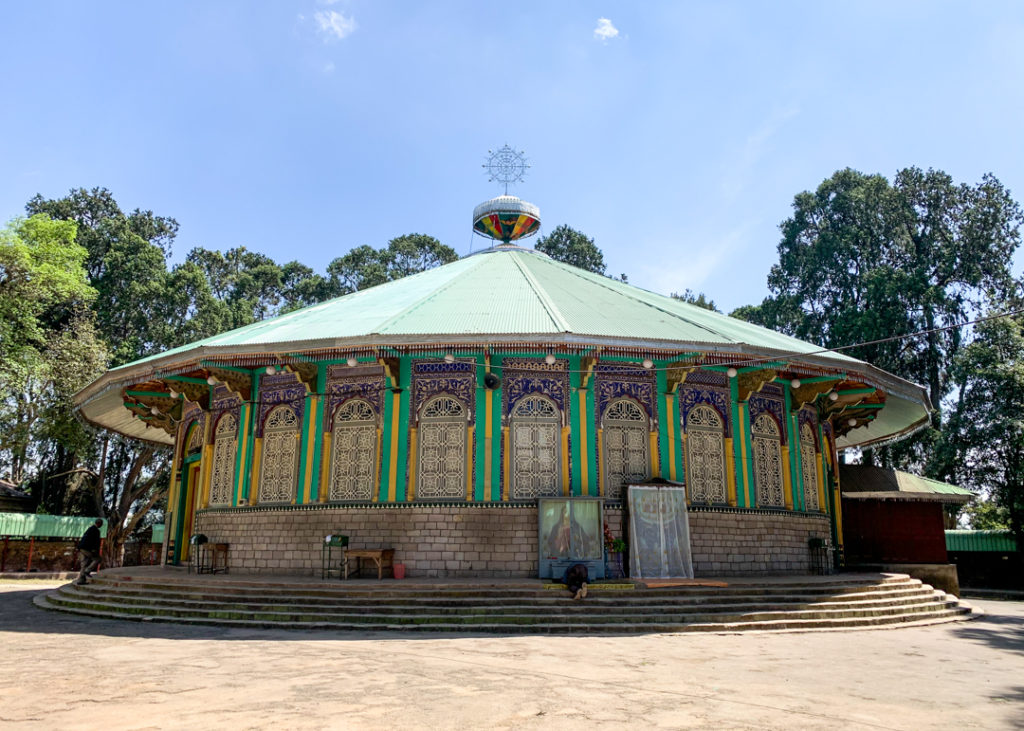
If you’ve ever eaten Ethiopian food before you know it’s quite a special and very flavorful cuisine and there are tons of marvelous places to sample it all across town. Central to every meal is the spongey and sour bread ‘injera‘ which you use like silverware by tearing up pieces to scoop up any of the spicy stews and cooked vegetables on the tray. Injera is made with teff flour, the staple grain of Ethiopia, which is packed with protein, calcium and iron, and also happens to be gluten-free!
The meal pictured below has a mix of meat-based and vegetarian stews with the famous Doro Wat in the middle (a spicy chicken and egg stew) but it’s worth noting that in Ethiopia, every Wednesdays and Fridays are “fasting days,” meaning most people don’t eat meat.
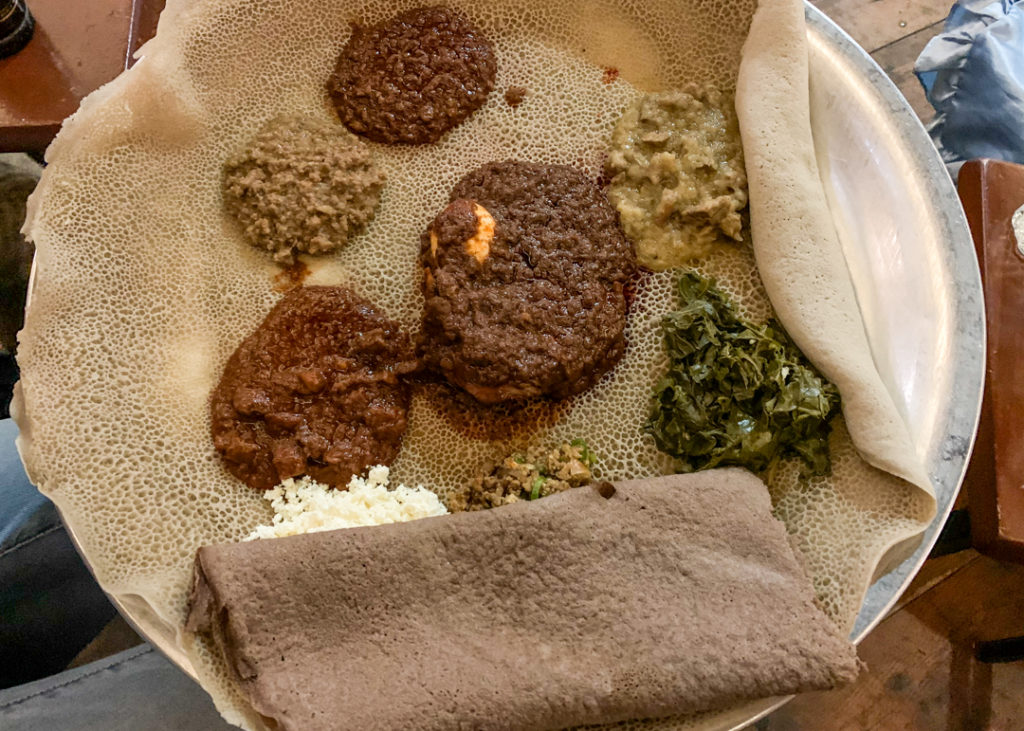
A visit to a market is another must do, whether you want to brave the craziness of the famous Merkato – known as the largest market in Africa at 1km square – or opt for the smaller and more picturesque Shola Market as I did.
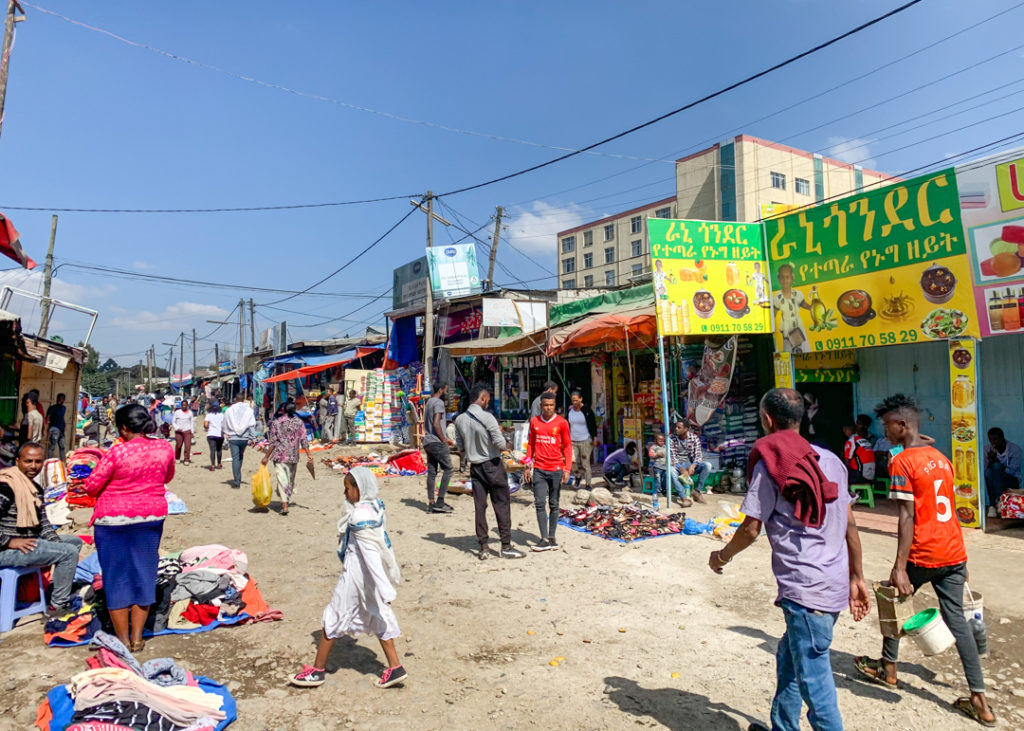
There’s no hassle from the vendors so you can leisurely stroll around the maze of stalls to look at all the merchandise and see how the locals shop.
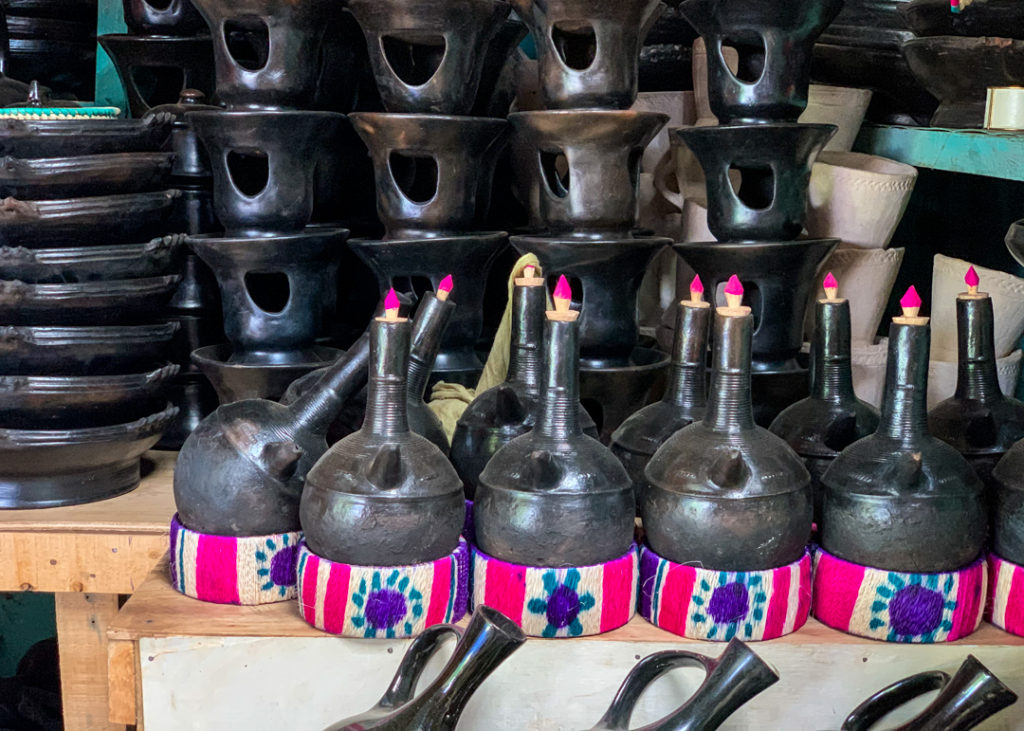
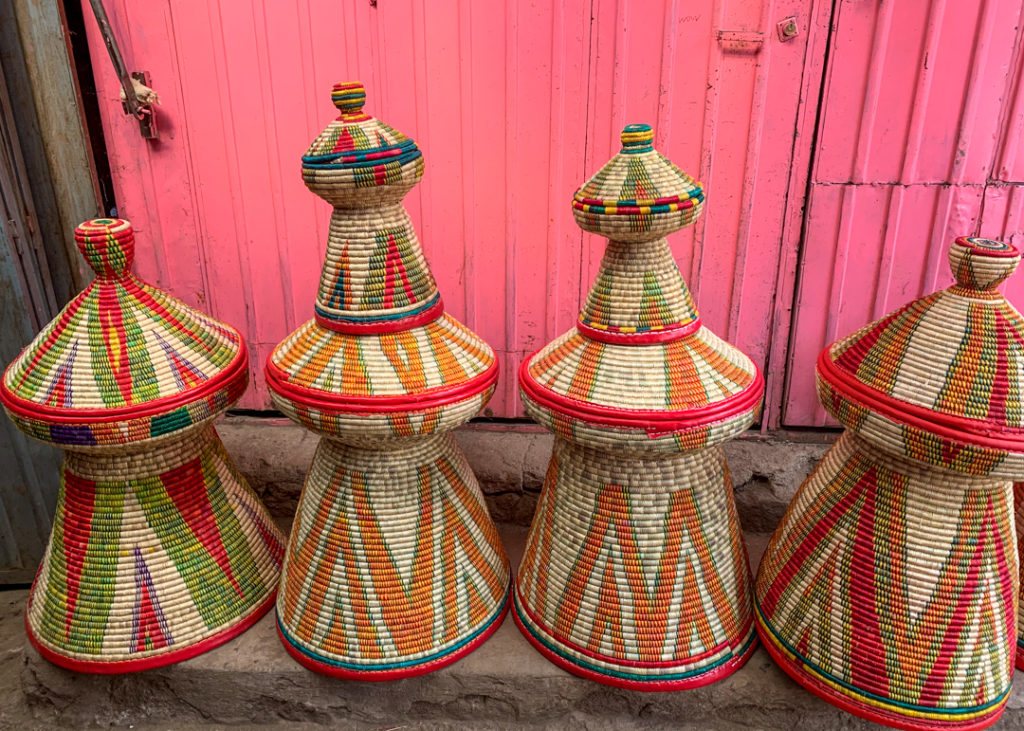
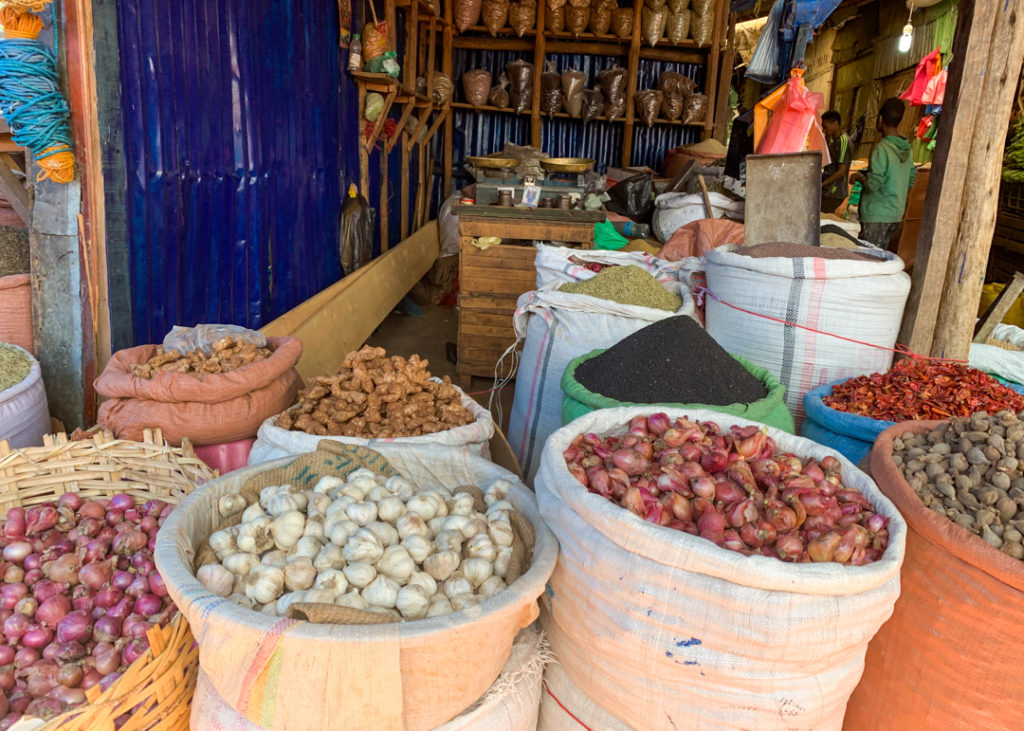
It certainly gives a good insight into what Ethiopians eat, with lots of chilies, lentils, beans, onions and tomatoes for all the vegetarian stews they cook every day.
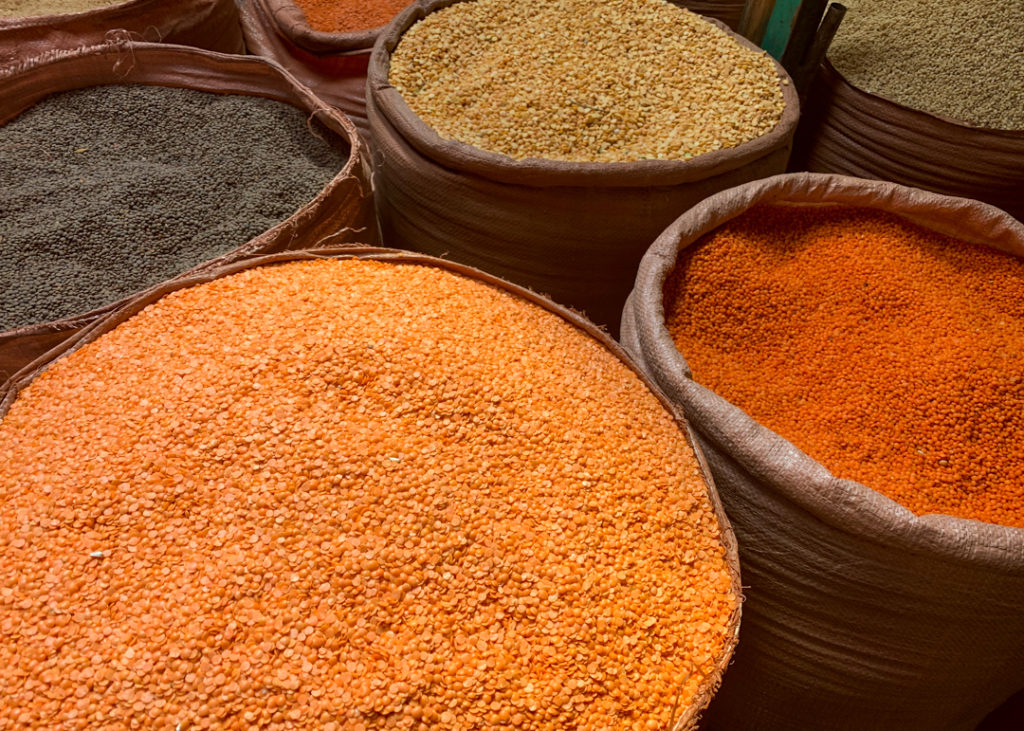
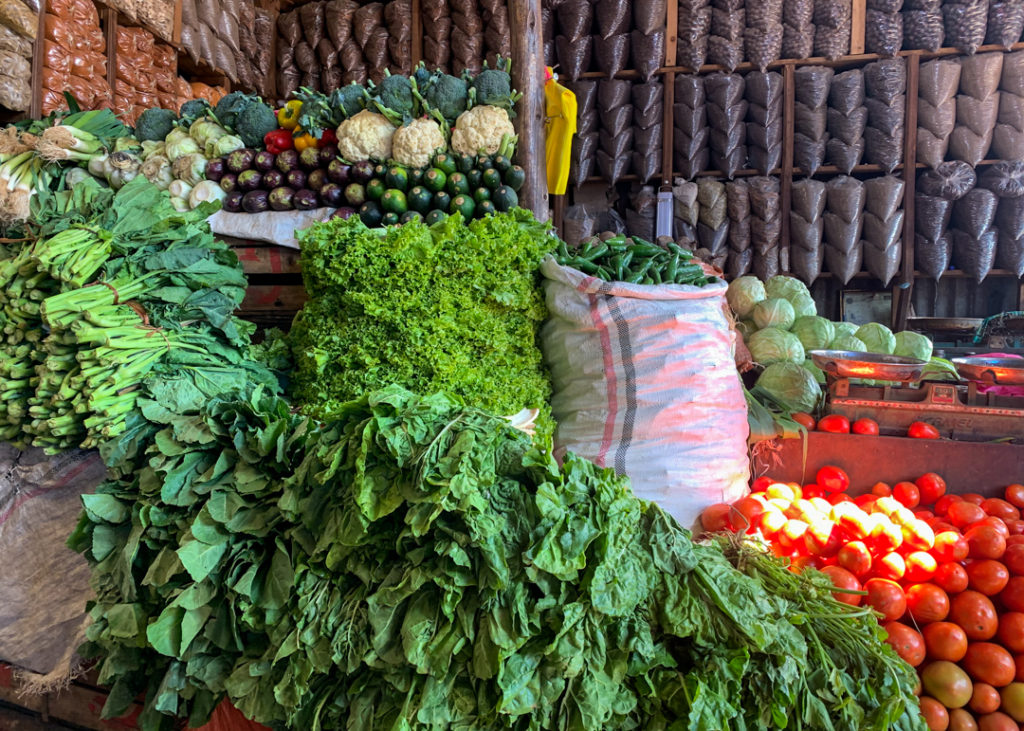
If you’d like to bring one culinary souvenir from your trip though, make it a bag of berbere – a unique spice mix that is used in almost every local dish and freshly roasted here. While the recipe might change from one vendor to the next, the mixture usually contains chili peppers, garlic, ginger, basil, korarima, rue, ajwain or radhuni, nigella, and fenugreek. I’ll use it to spice up my eggs, marinate meat before grilling, and maybe give some punch to stewed vegetables…
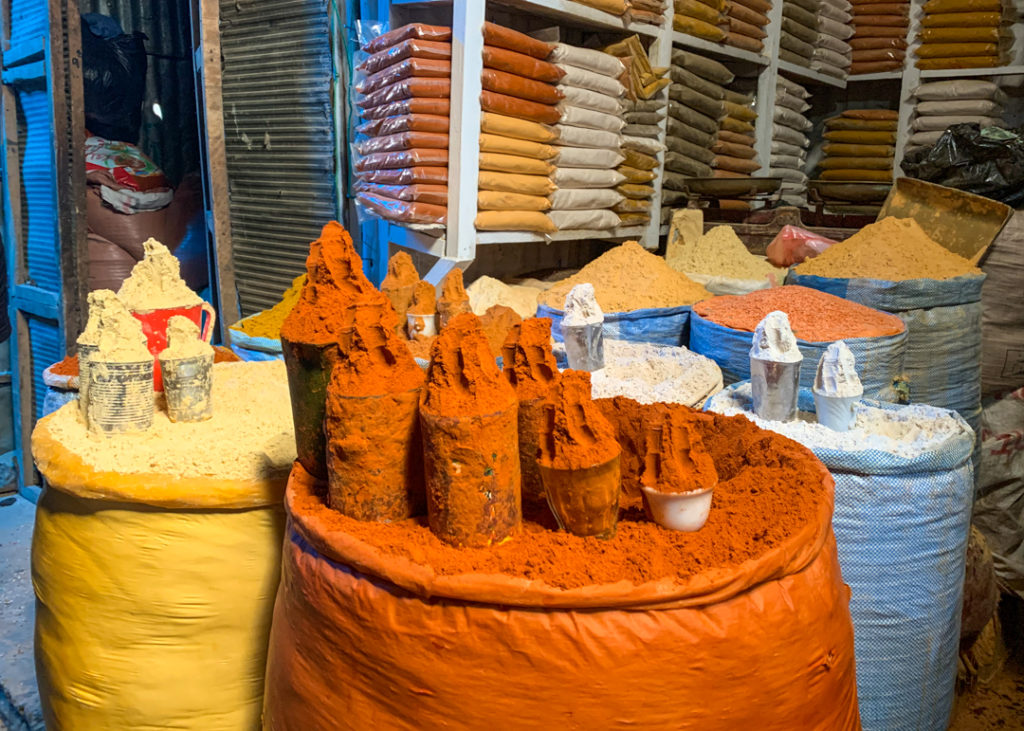
Butter is also an ingredient integral to Ethiopian cuisine – I’ve actually never seen another culture using so much of it in their cooking! Most dishes call for Niter Kibbeh (Nit’ir Qibe) which is clarified butter that has been infused with herbs and spices.
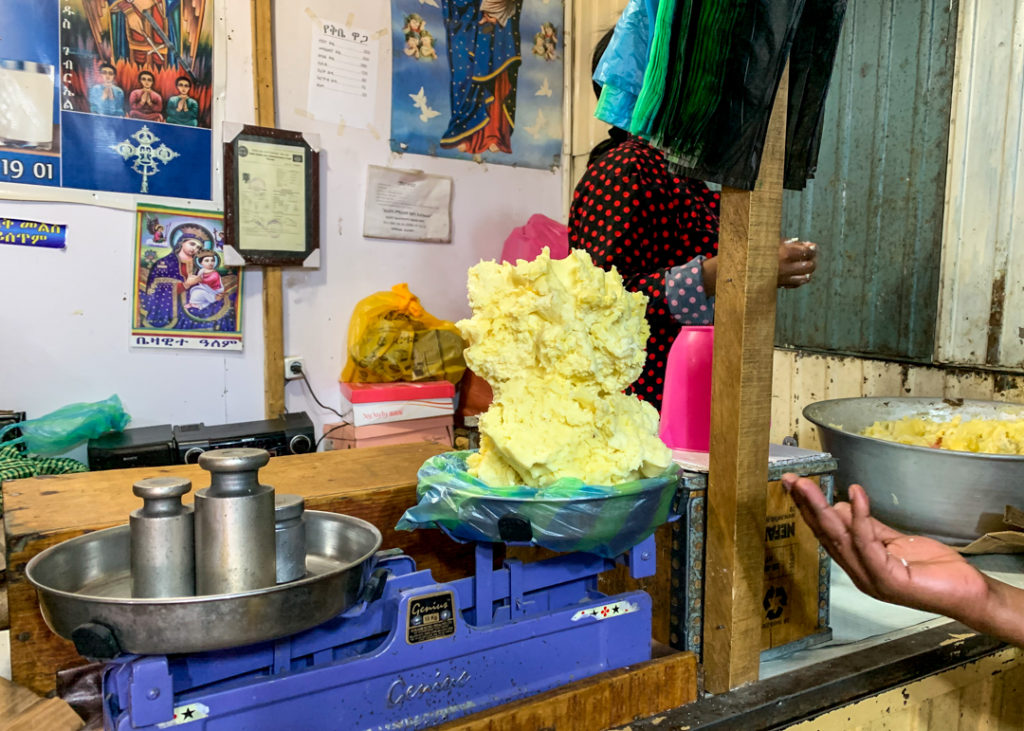
One peculiar ingredient which you might not have seen elsewhere is enset, most commonly known as “false banana tree”. The plant looks like a banana tree but isn’t grown for its fruit. Instead, they harvest the pulp of the roots and leaf sheaths and let it ferment underground from four months to a year. The result is a slightly sour-tasting substance that is used in dough to make bread or in soups and porridges. It has been cultivated for tens of thousands of years, exclusively in Ethiopia, becoming a staple crop for 20 million people.
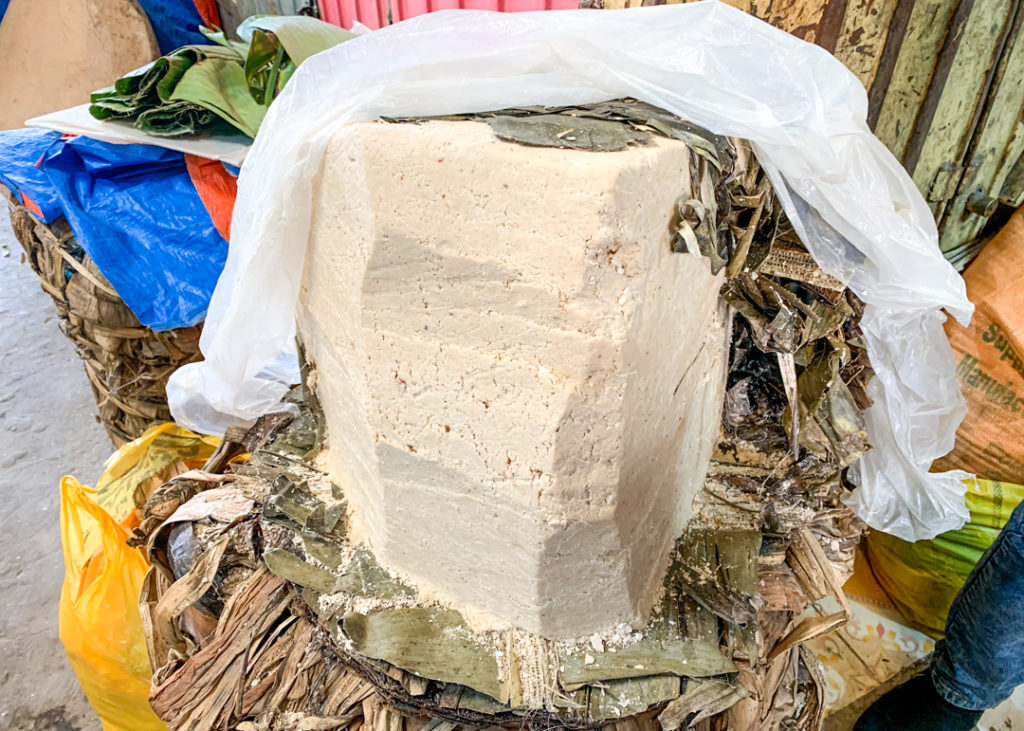
Live chickens are reserved for special occasions with beef being the most common source of meat in the Ethiopian diet.
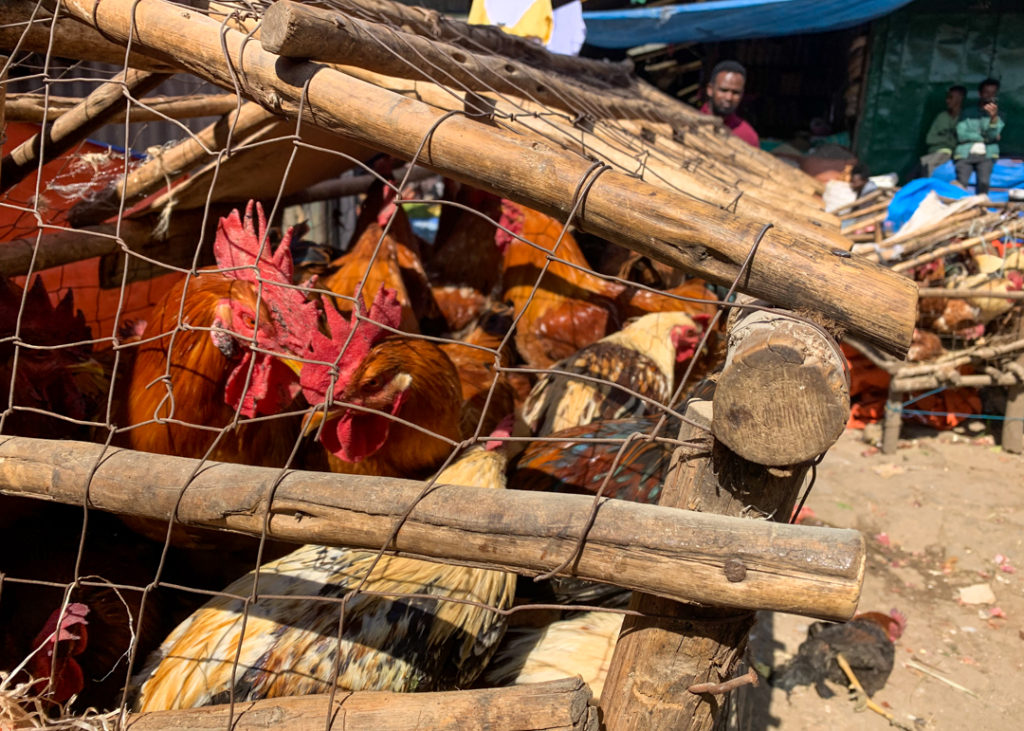
Grass on sale… it might seems strange or thought as feed for animals, but grass is heavily used in homes for the coffee ceremony. It is spread on the floor to symbolize abundance and welcome guests into the home.
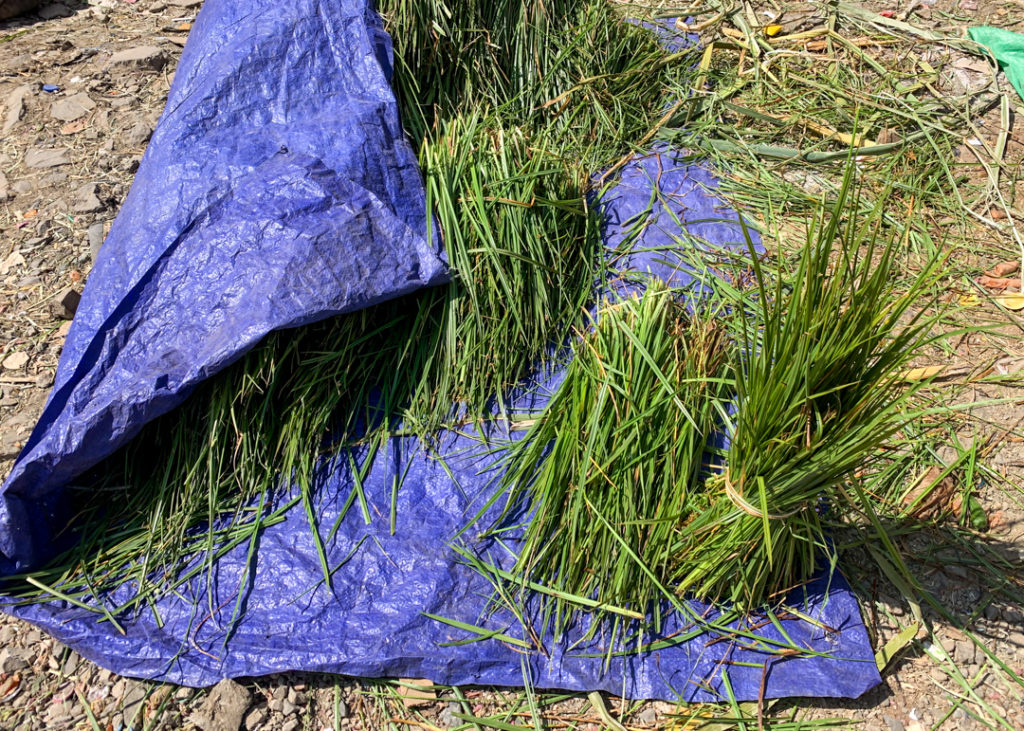
The vastness of Addis Ababa is best appreciated from high up and there’s no better views than the ones from Entoto Hill. The mountain reaches 3,200m at its summit (Addis is actually one of the highest capitals in the world at 2,355m altitude) and is densely covered by eucalyptus trees. You’ll feel the cool fresh air up here on top of enjoying panoramic vistas.
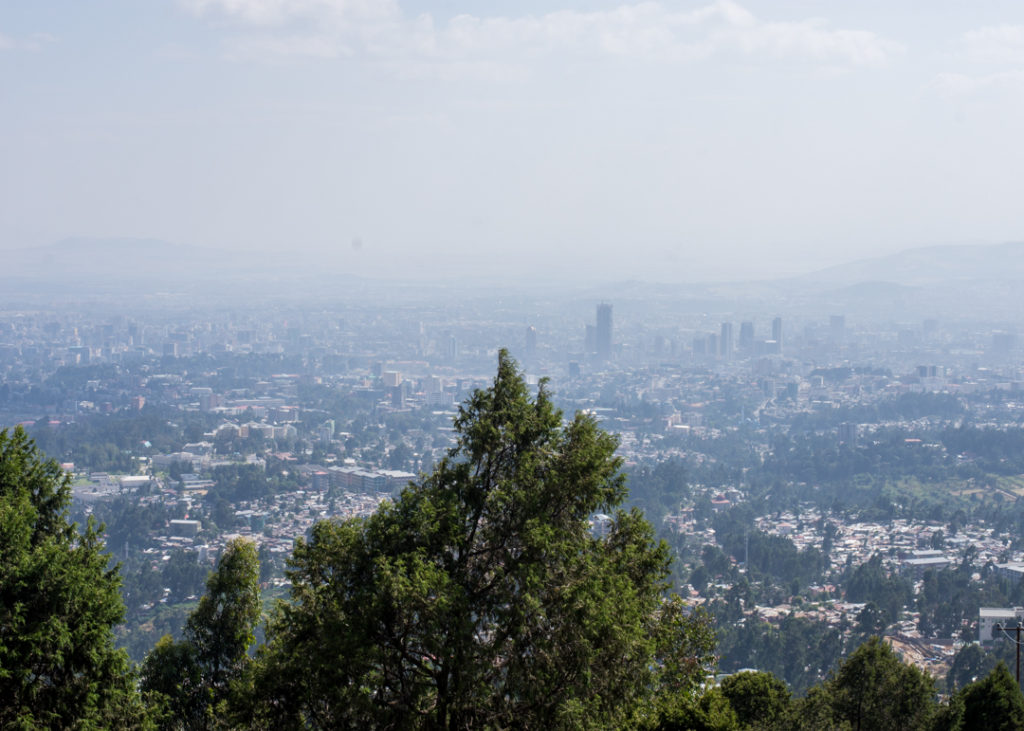
Ethiopia has a long tradition of beautiful handicrafts including high-quality hand-woven and embroidered textiles and baskets. If you want a serene and beautiful shopping experience, stop by Salem’s Ethiopia.
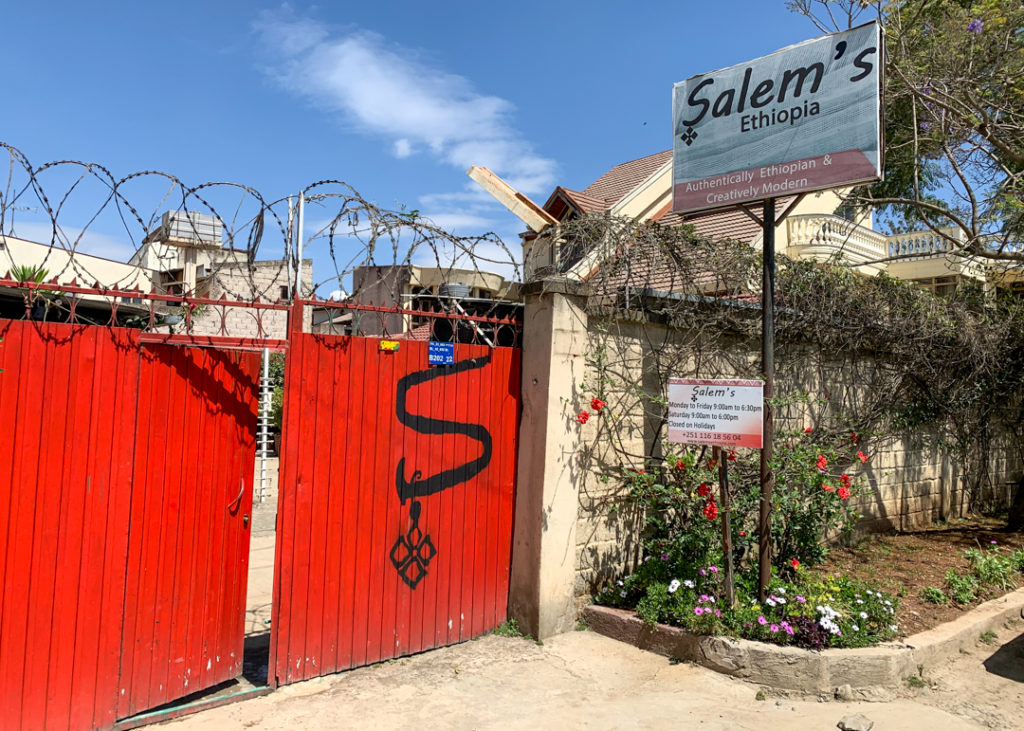
The fair trade workshop and boutique is located in a charming courtyard away from the bustle of the city and will let you browse at your own leisure – a more relaxed experience if you found the market overwhelming.
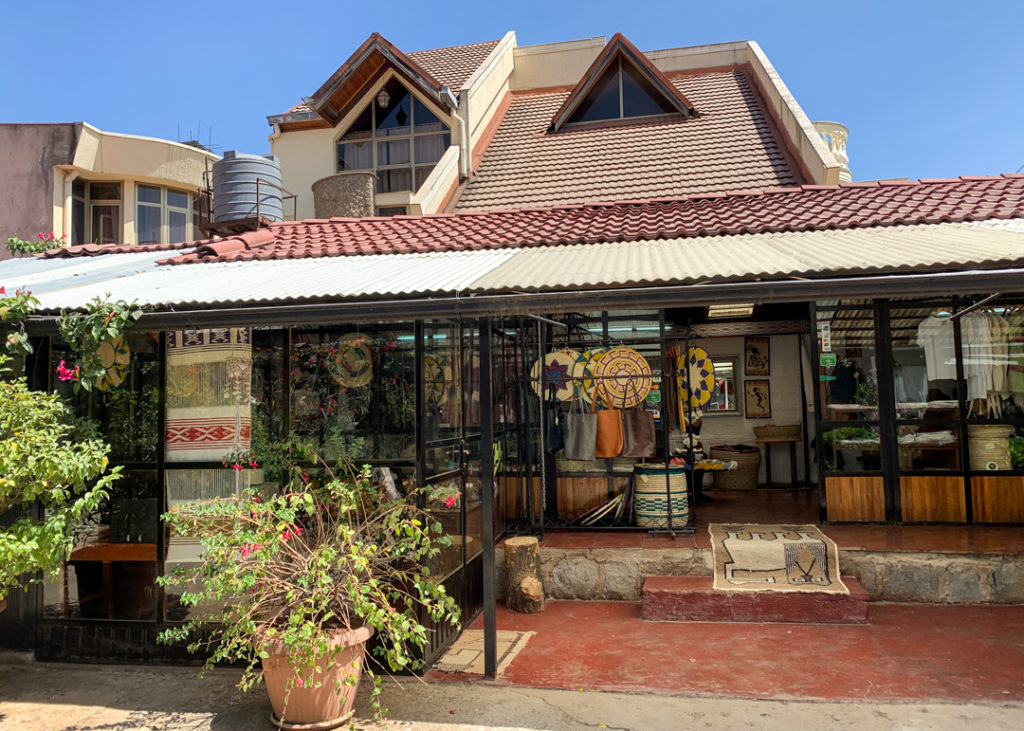
Colorful scarves, baskets, jewelry, housewares and other handicrafts are available to purchase at reasonable prices and the quality is exquisite.
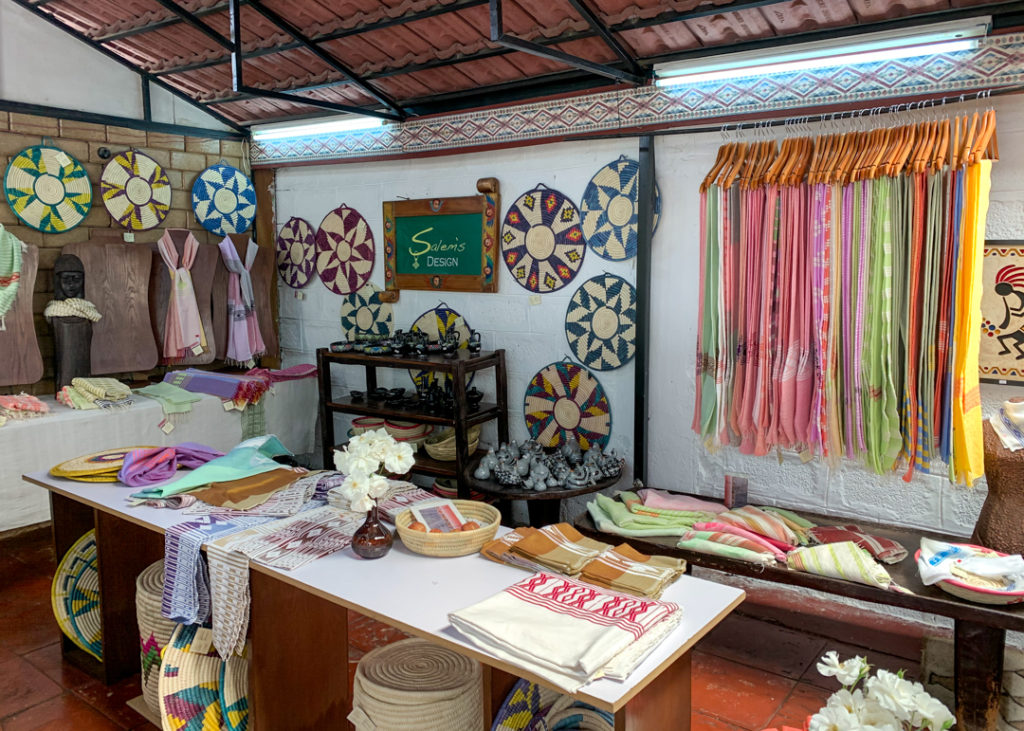
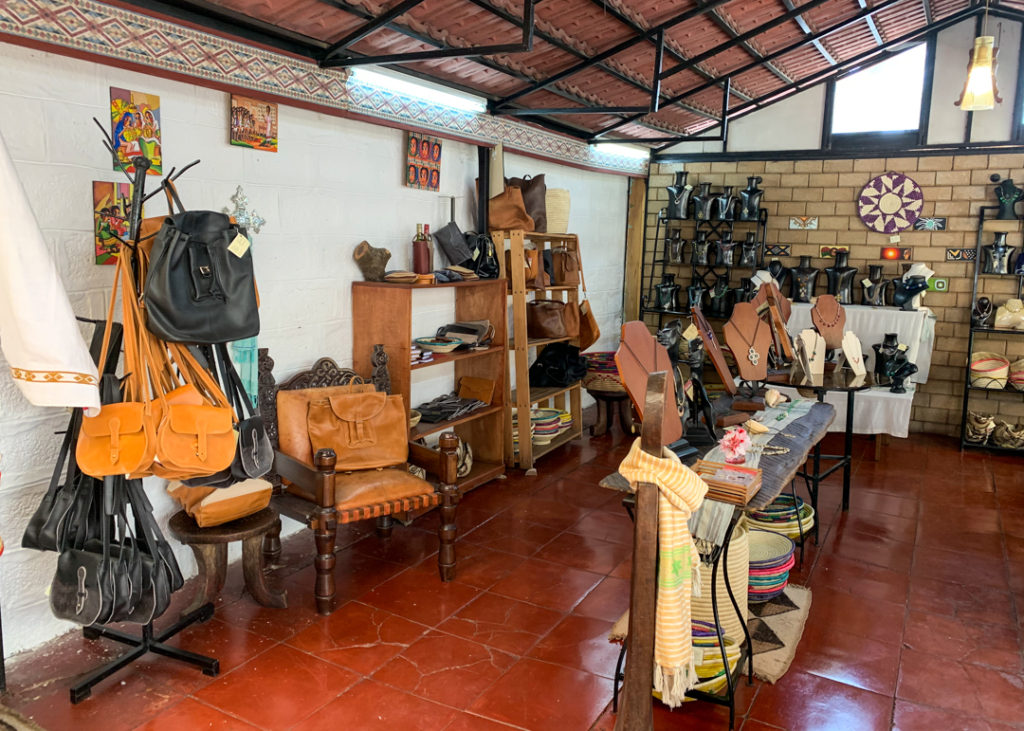
The beauty of stopping here is the ability to watch the artisans at work, from the weavers…
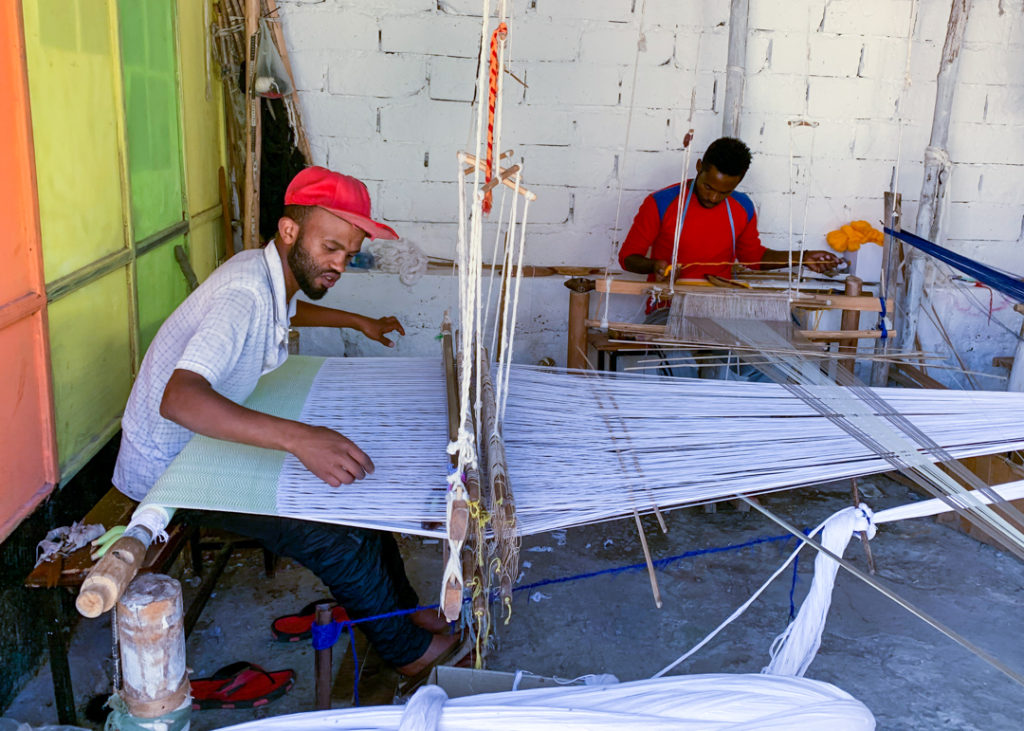
…to the basket makers.
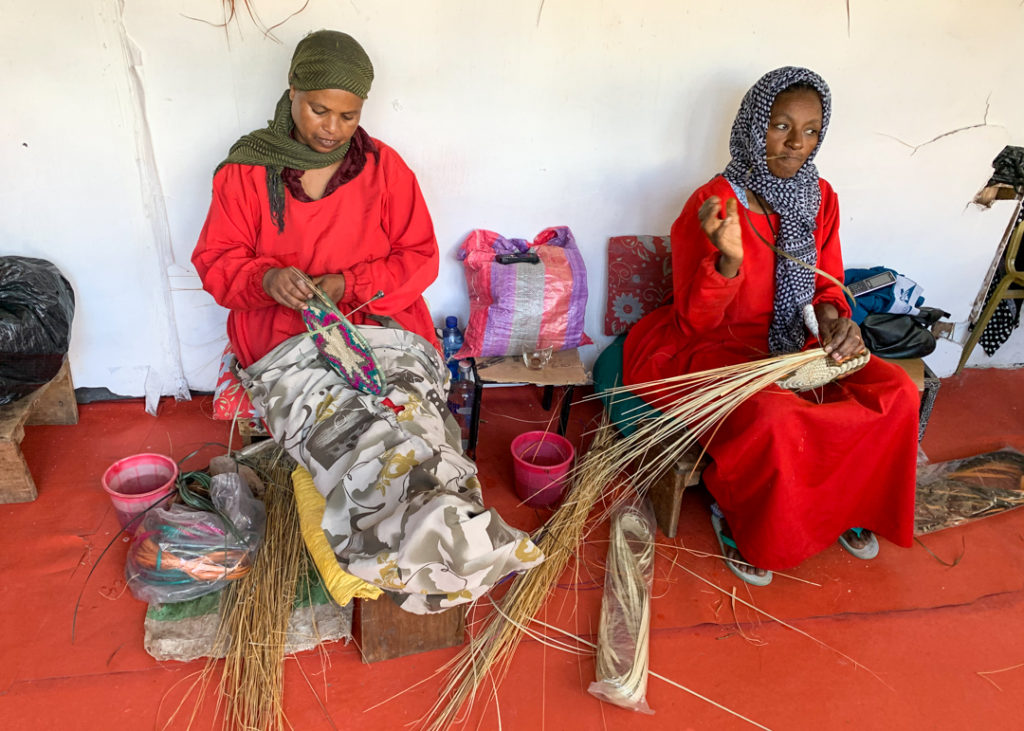
As I mentioned at the beginning, I had unsurprisingly booked a food tour which would bring me to four different establishments where I would sample some culinary specialties. My big lunch wasn’t too far behind when I met my guide at a local cafe for our first meal – a scrumptious vegetarian spread.
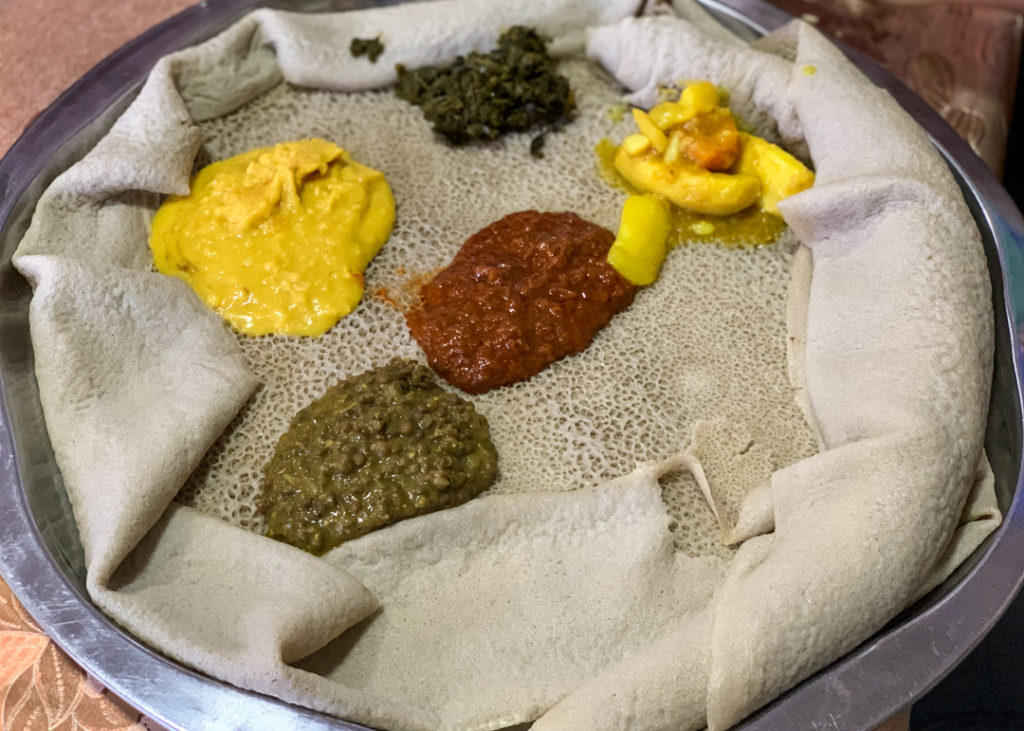
Next stop was a whole fried fish, so good I almost ate it all despite my being already full.
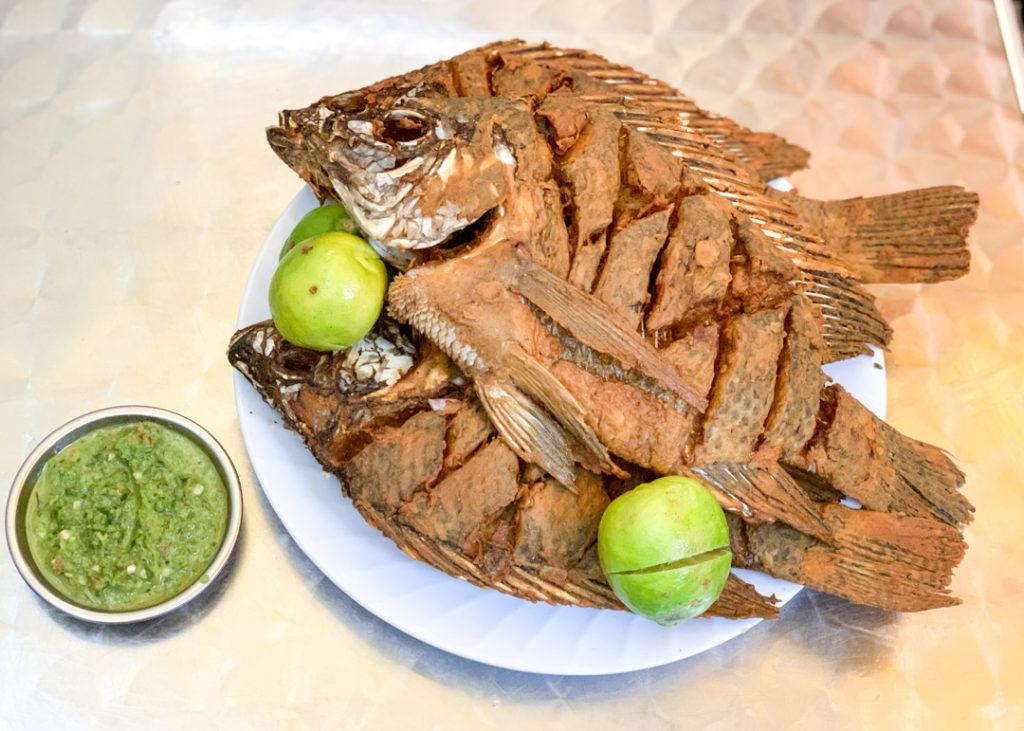
Third stop was the meat course at Yilma Restaurant, a place famous for its tibs (finely chopped and cooked meat) and for having been visited by Anthony Bourdain as part of its No Reservation TV show. Raw beef is also really popular, served with a spicy sauce and injera, but I skipped that one to stay on the safe side.
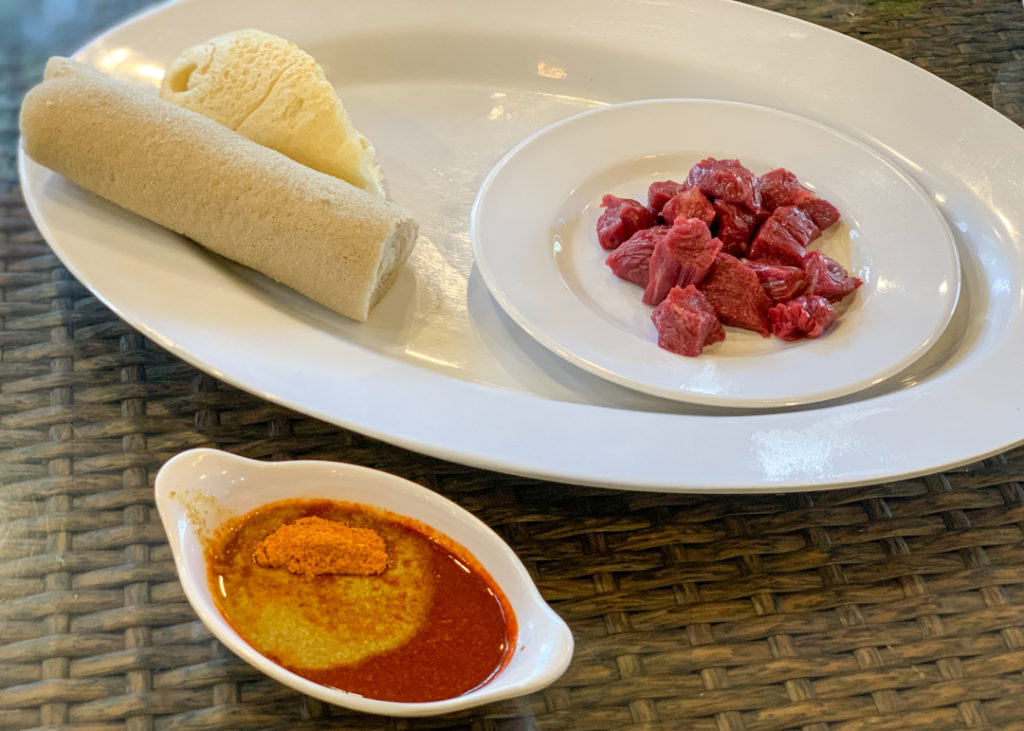
The beef tibs were delicious though, tender chunks of beef cooked with onions and lightly seasoned. Washed down with a cold local beer (go for Habesha!), we were now fully satiated.
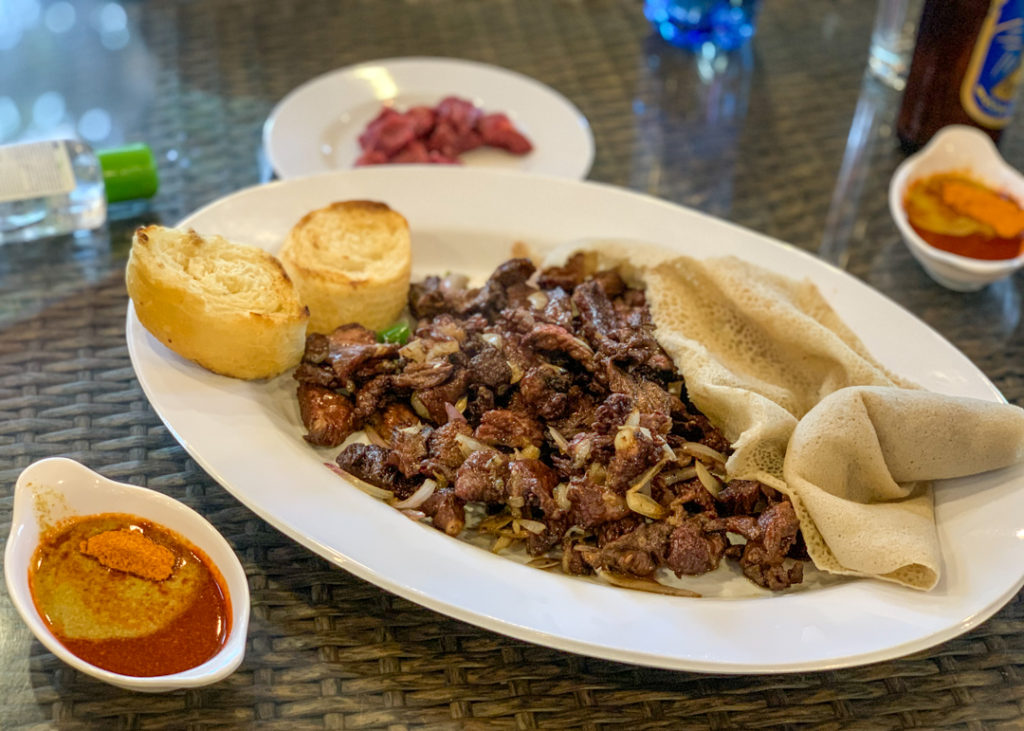
It wasn’t the end though as there was one final stop for a coffee ceremony. Many shops and restaurants recreate what it would be like to be invited into someone’s home for coffee, which in Ethiopia means a 2 hour ritual. It’s an integral part of social and cultural life here and you’ll enjoy every moment of it.
Coffee lovers will love this true feast for the senses as fresh green coffee beans are slowly roasted over charcoal, then the host soaks each guests in the aroma created by the coffee’s smoke. Next they manually grind the beans into a fine powder and pour them into a black clay coffee pot that has been boiling over hot coals. After it comes to boiling again, the coffee is finally ready and poured into tiny ceramic cups with sugar on the side (milk is never offered). Frankincense is lighted up and the incense fills the air for one more olfactory pleasure while you sip this incredibly strong and silky brew.
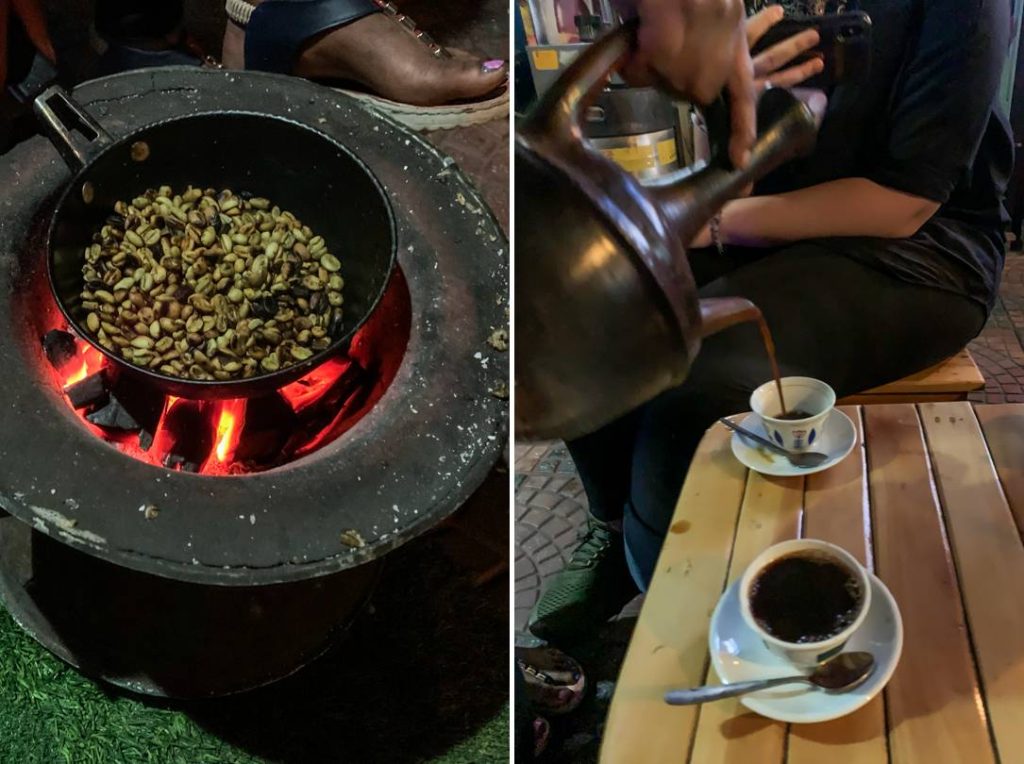
If you have more than a day or two in Addis and would like to try something other than Ethiopian food, there’s a wide array of international restaurants to suit your fancy. My vote would go for a similarly exotic cuisine though which you can find at Bait Al Mandi, a wonderful Yemenite restaurant.
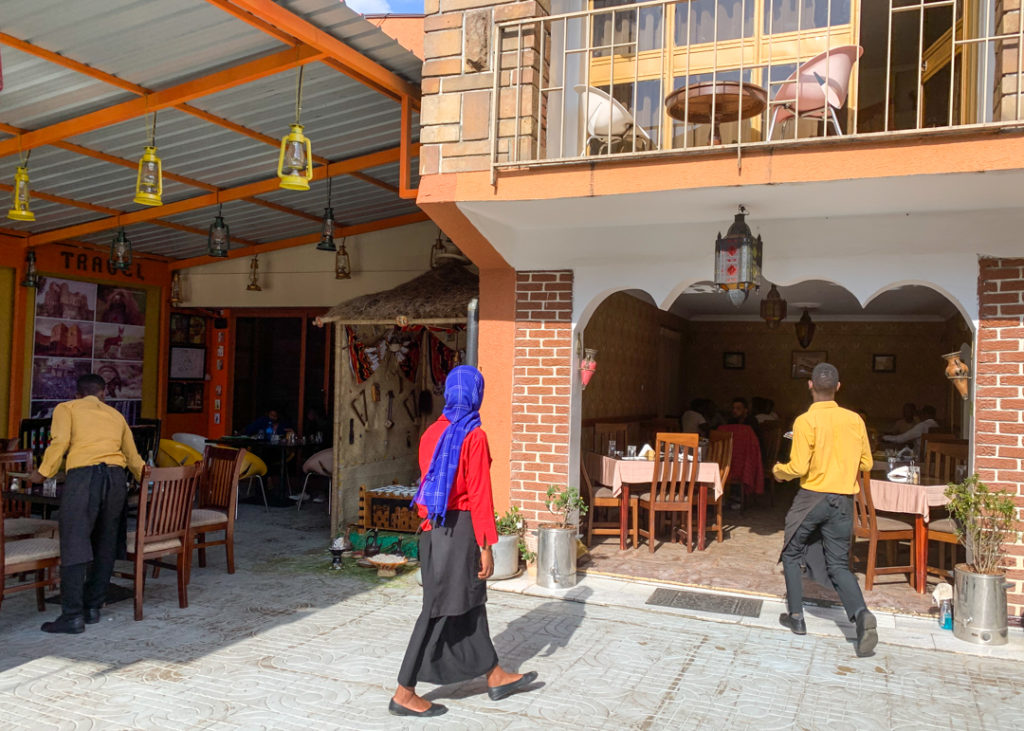
I’m a huge fan of Middle Eastern cuisine and don’t think I’ve ever had food from Yemen so I was particularly excited about this meal and it didn’t disappoint! A flavorful broth was first brought up, I would guess made of lamb and local herbs.
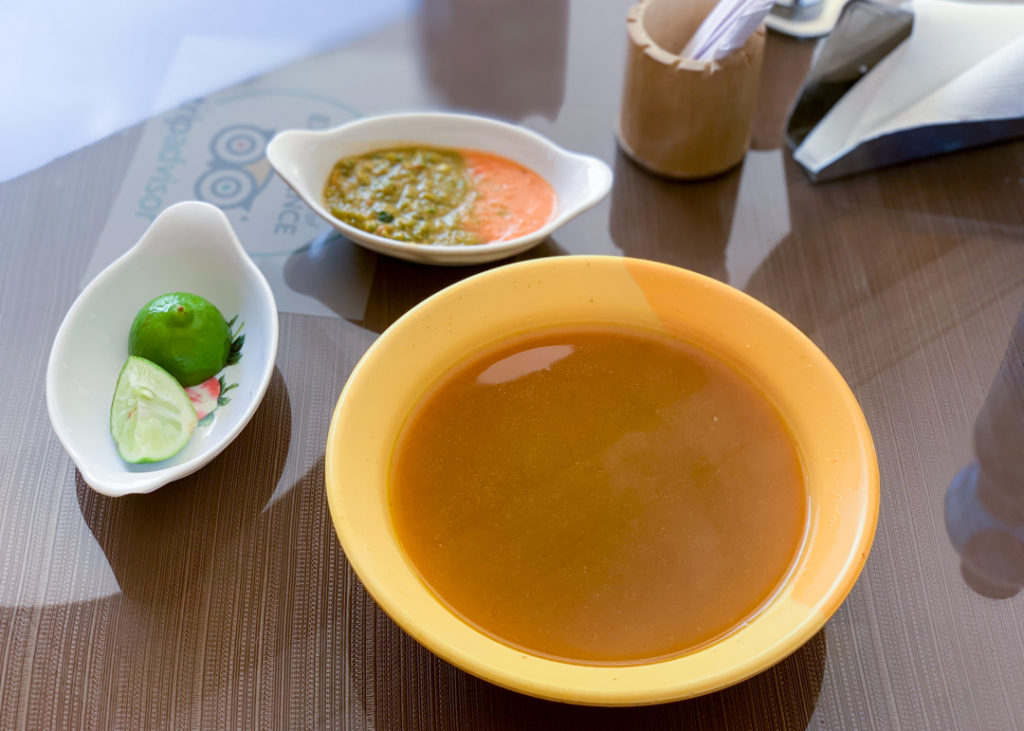
I ordered as my main dish saltah – a hearty vegan stew of tomatoes and rice topped with a thick fenugreek froth. Healthy comfort food just the way I like it.
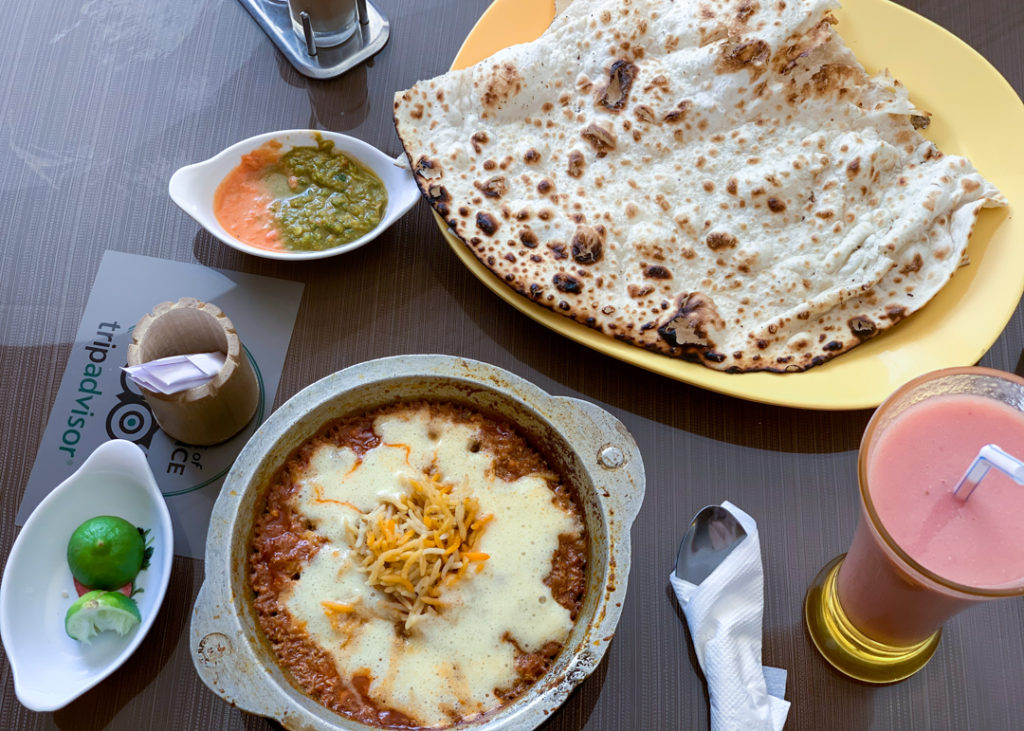
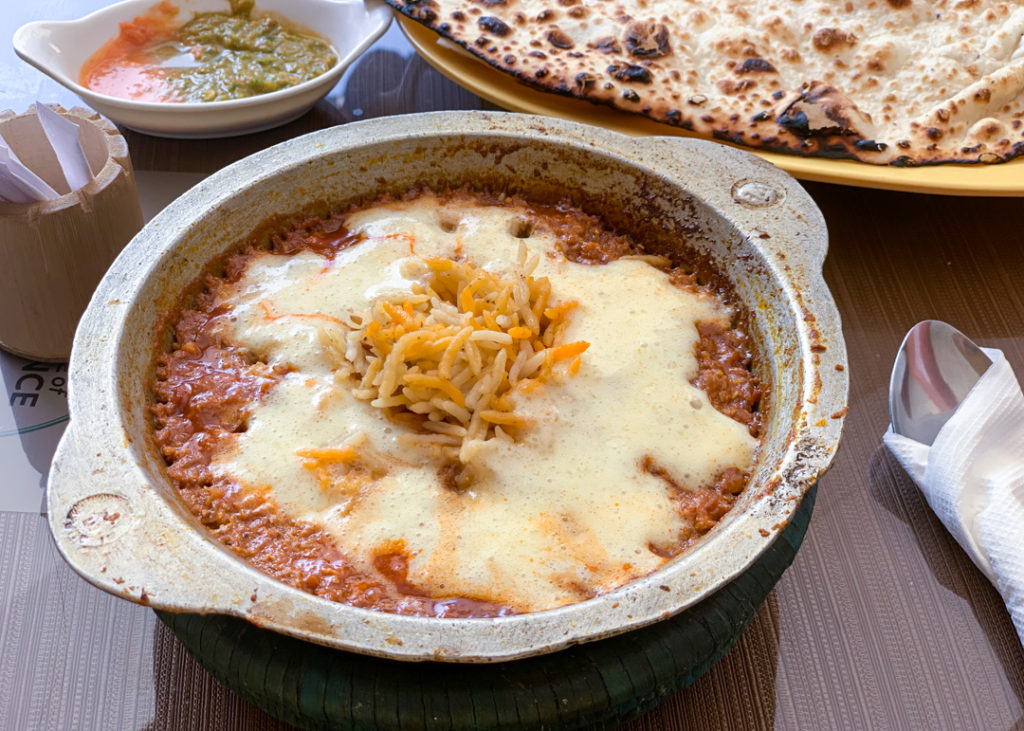
My last recommendation for Addis is for a bar near the airport if you have a long wait time before your flight or simply need a good cocktail on a night out in town. The Black Rose Bar (2nd floor of the Boston building) is a dimly-lit, classy and atmospheric lounge with jazz playing in the background and a long list of drinks to fuel tomorrow’s travel plan or take the sting out of the long flight back home.
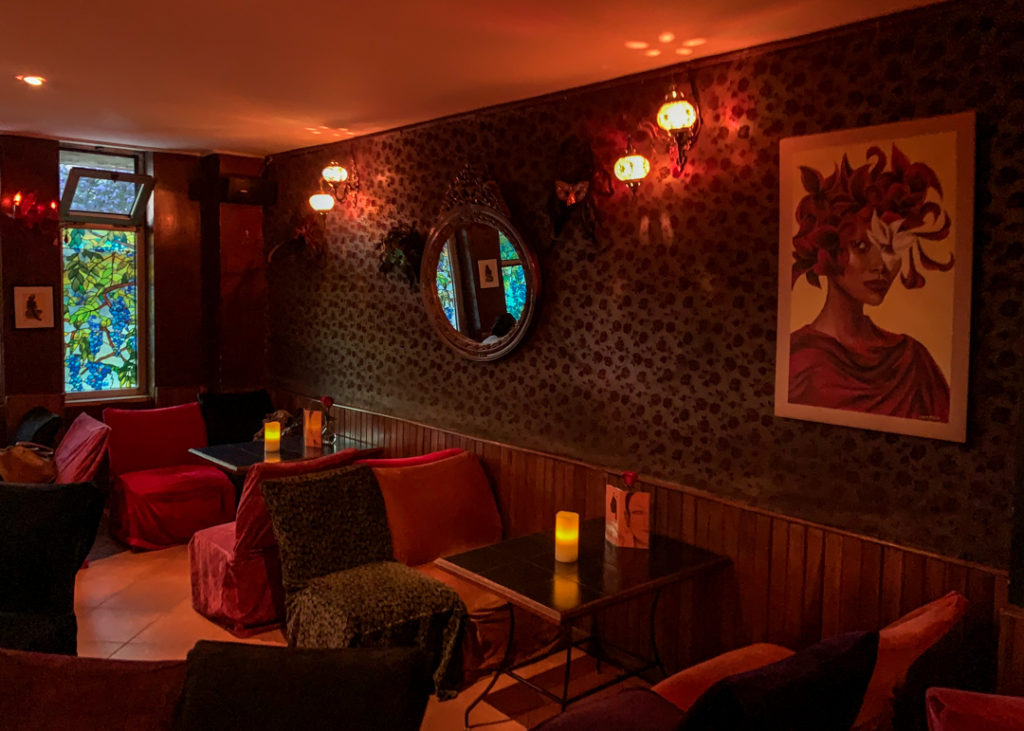
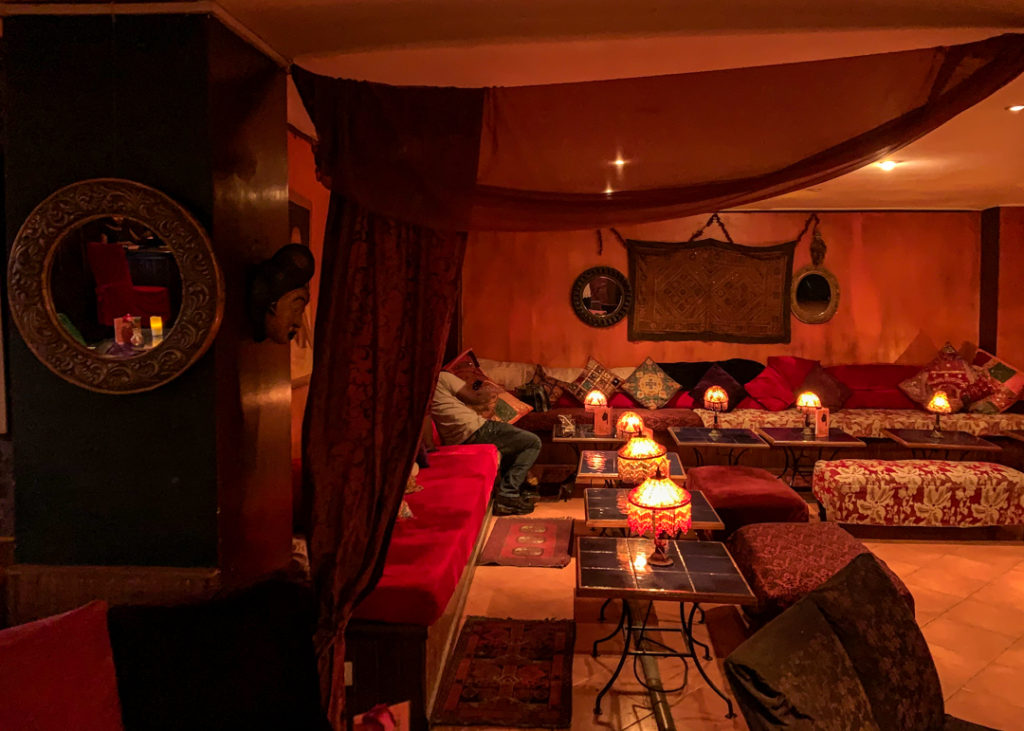
So whether at the beginning or the end of your Ethiopian adventure, make sure you give its capital a chance to infect you with its energy, fascinating culture and incredible food. It’s not yet mobbed by tourists but looking at how quickly it’s expanding it won’t stay under the radar forever!


